



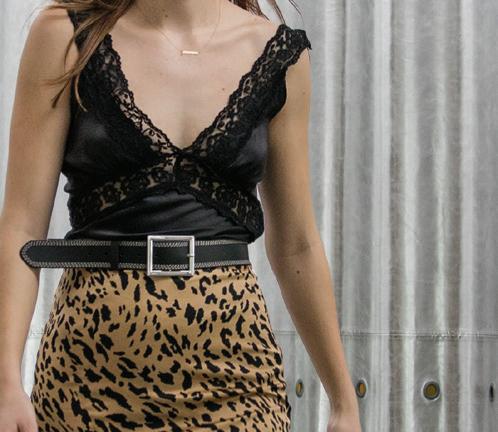

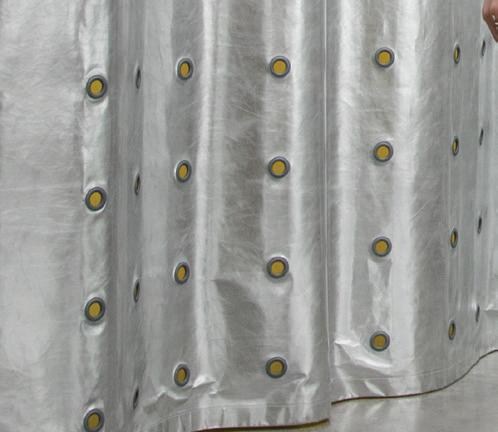
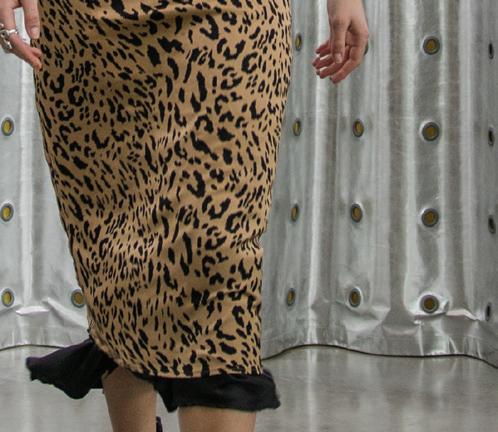
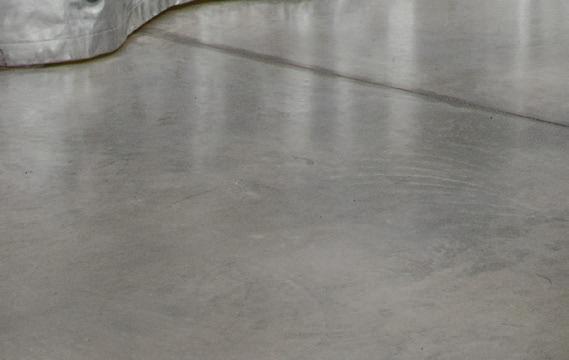
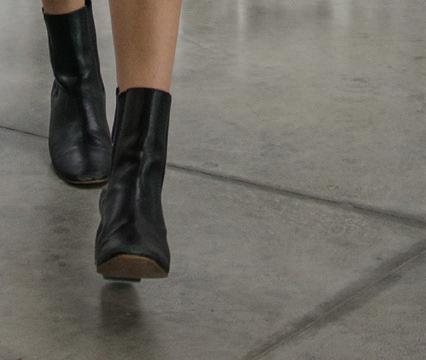
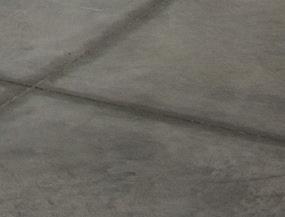

COVERS
models: Georgia Brown, Aiyana McDonell
photographers: Markos Lissarrague, Hana Dolan
layout: Talia Rosen


18


3-4 5-6 7-12 13-18 19 20-26 27-28 29-32 33-38 39-40 41-46 .................................... ..................... .................................... .................................... ........... ........................ ........................ ............. ......................................... ........... ......................... Recreating Portraits Contributors Letter from the Editors Storytellers Beauty Sleep Fashion Abroad: Skyla Patterson Faux Pas Senior Spotlight: Fran Cannon From Field to Fashion Westernization of the Nose Ring Highlighting K-Beauty
Peter Huleatt, managing editor
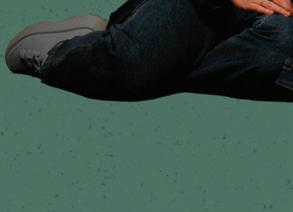
Ravi Travers, head stylist
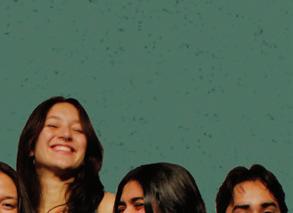
Sophia Viscarello, photography director

Laura Jeffries, editorial director



Talia Rosen, layout director


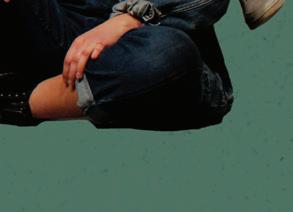
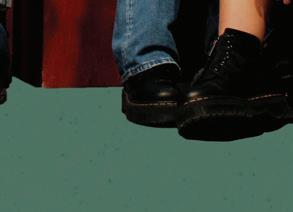
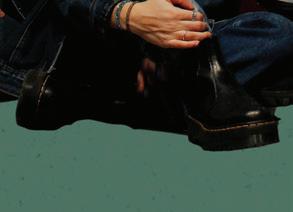






Jade Levitin, beauty director & pose coordinator
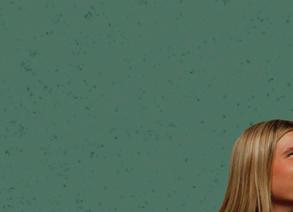
Maggie Nye, publicity director
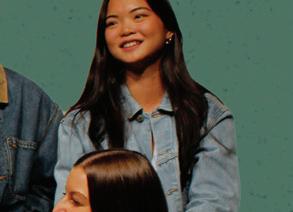
 Surya Gowda & Anna Sakamoto co-editors-in-chief
Surya Gowda & Anna Sakamoto co-editors-in-chief
3
STYLISTS
Zoe Carovano, Olivia Chandler, Louisa Crozier, Sammy Higgins, Cole Kuczek, Pedro Lacerda, Amaris Martins, Eliza T. Pendergast, David Sandoz, Kenna Smith, Ella Strasser, Maeve Zimmerman
PHOTOGRAPHERS
Varvara Aristakesyan, Hana Dolan, Kaitlyn Fudge, Markos Lissarrague, Imani Mitchell, Amanda Sedaka
WRITERS & COPY EDITORS
Sadie Chase-Tatko, Caroline Boyd, Emma DiGiacomo, Lydia Gross, Bryna Jekogian, Lamia Karabegovic, Eda Keni, Hadley Noonan, Kenna Smith
LAYOUT EDITORS


Sophie Christensen, Juliet Davidson, Emily (Mil) Fienco, Mekhia Foster, Andrea Hayman, Anna Song
BEAUTY ARTISTS
Ashley Cheffolway, Bethany Fell, Claire Harpel, Abigail Lowder, Eva Pearlman
MODELS
Brianna Adrien, Sofi Block, Georgia Brown, Norma Callejas, Fran Cannon, Sophie Christensen, Charlotte Clark, Owen Dzierzgowski, Mil Fienco, Patrick Fleischer, Andrew Frey, Javier Garcia, Mark Harrington, Peter Hinkle, Bess Lawrence, Maeve Luparello, Amaris Martins, Kaylee Martin, Nathalie Martinez, Aiyana McDonell, Tay Meshkinyar, Maggie Mieczkowski, Maggie Nichols, Kylie Oblak, Aparna Patnaik, Skyla Patterson, Jun Mathew Reiss, Isis Riviere, Jay Schaefer, Merrill Storch, Eleanor Wefing, Cole Wright-Schaner, Sean Zhang
4



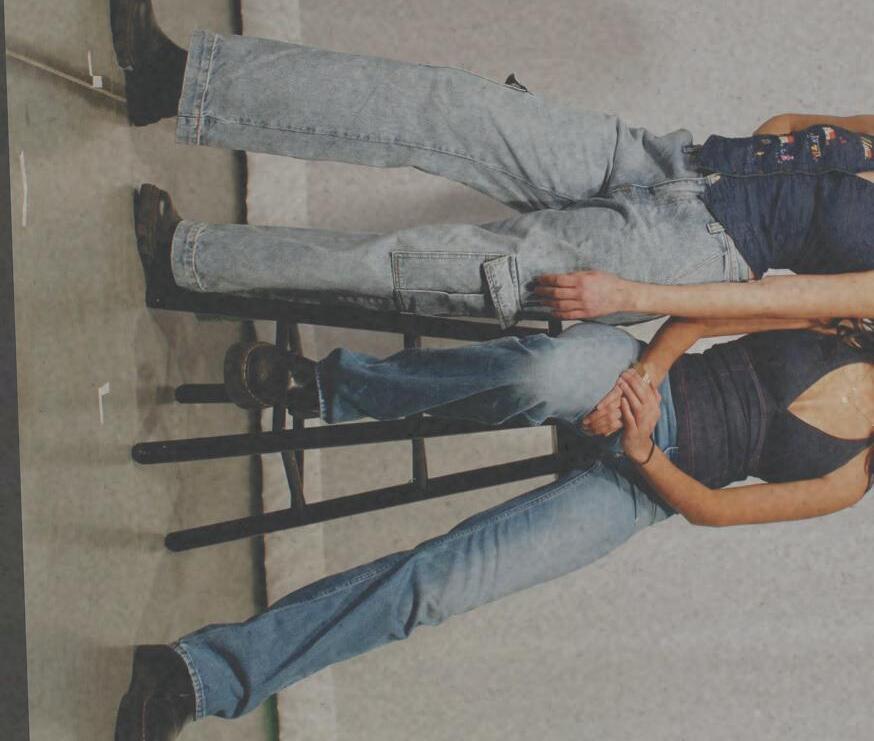




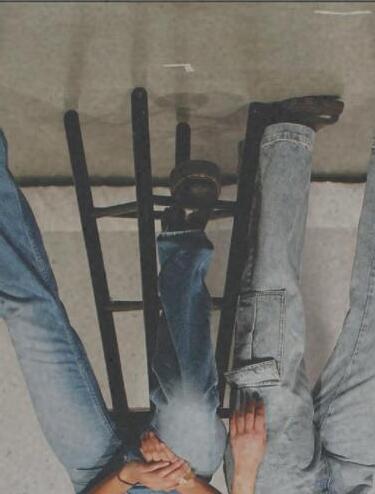
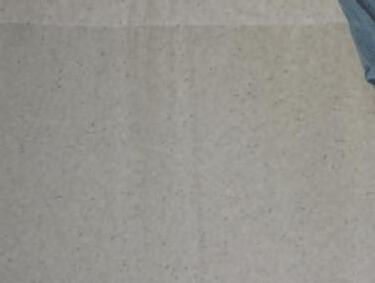


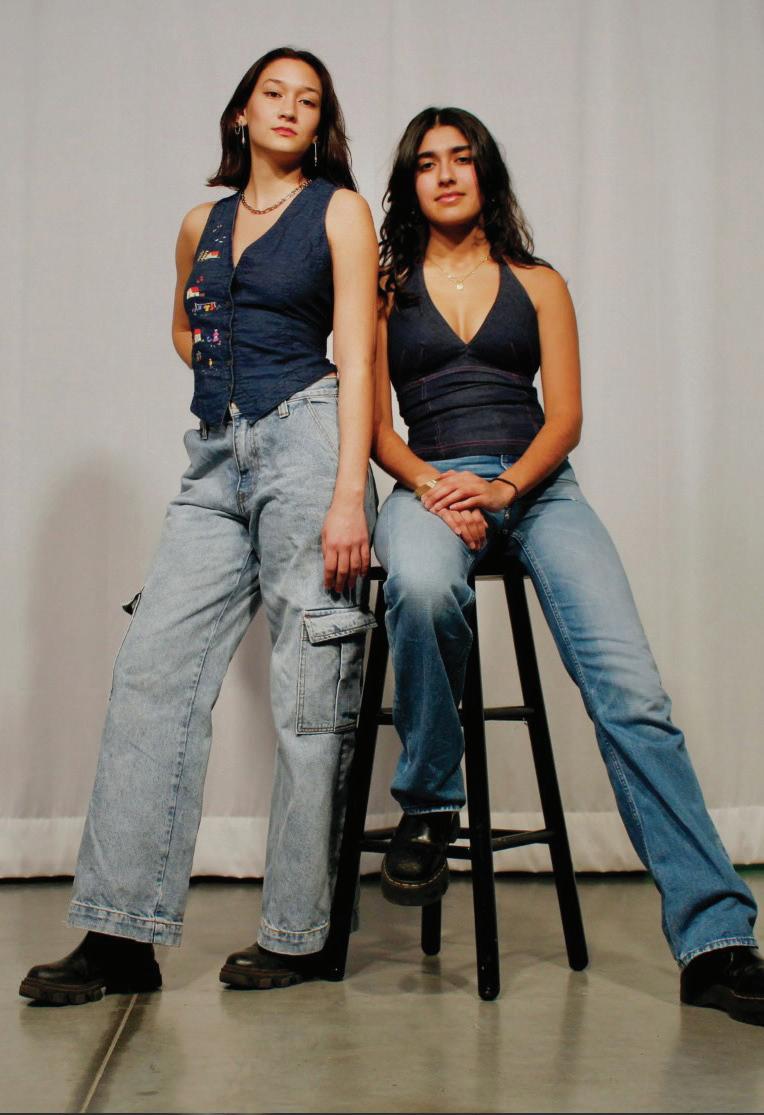
letter
letter from the editors
from the editors letter from the editors letter from the editors
photographer:Amanda Sedaka
5
layout:Talia Rosen
Dear








Thank you for picking up the 18th issue of Signature Style! This semester has been one of excitement and so many new experiences. Surya stepped into the role of Co-Editor-in-Chief alongside Anna from her previous role as Head Stylist. The team has worked tirelessly for the past few months to create a magazine to wrap up our tenure on Signature Style, so we hope you love it!
We are celebrating our fourth year with the magazine. Therefore, this issue is a culmination of our time at Hamilton. We started as stylists on the G-board our first year, eventually moving into head stylists roles and finally becoming the She-E-Os (we always were) by our senior year. In that vein, we wanted to write a short reflection on our time with the magazine.
Since coming to college, I’ve noticed that when I get dressed in the morning, I always grab something that was my mom’s–whether it be jewelry she made or a 90s asymmetrical shirt. When I think of my significant fashion influence, everything I have learned about styling and self-expression has been from her. We would visit India every year, and the rich culture of color and textiles would envelop me. Until recently, I didn’t recognize my style as connected to those summers there. Now I look at my closet and see glimpses of that craftsmanship and design in my clothing. My closet is one of all my memories, from my mother’s hand-me-downs to the styles I have picked up from my time in New York, London, and Stockholm. While being a part of the magazine, I have realized that fashion is about growth and evolving your style. The Signature Style community has introduced me to new perspectives and encouraged me to articulate my style in ways I didn’t know how before. Today, I curate outfits through a culmination of my experiences and have the confidence to truly represent who I am in what I wear (currently with inspiration from Charlotte York from Sex in the City and the Twee movement).
I left my home in Honolulu, Hawaiʻi, to attend Hamilton as a track and field team hurdler, expecting to study psychology or a career in medicine. Four years later, I look back and realize how much I have changed. I quit track, declared a major in Environmental Studies and a minor in Japanese (to relearn my native tongue), and rejuvenated my passion for fashion, design, and art. After years of exploration, I finally feel comfortable in my skin. Choosing an outfit forced me to get out of bed every morning, especially during my most challenging periods at Hamilton. I found solace in fashion, beauty, and curation through Signature Style. I am so grateful for my time with the publication and the creative people I’ve met. I also learned that a passion or hobby could also be a career. Thanks to the Signature Style co-founders Ryan Ong and Taylor Healy, I am fulfilling my dreams of working in fashion and retail in NYC after graduation.
We thank our E-Board and G-board for their time, work, and energy. The commitment of models, writers, stylists, layout designers, and photographers has made this magazine all it is. This issue would not have been possible without the shared passion for creating a fashion magazine that highlights the student body. To the seniors who collaborated this semester and are ending their time with the magazine, we can’t wait to see where you end up! We also want to thank those who helped us through our shooting process. Thank you, Juliet Davidson, for managing the lights for our first photo shoot, Kellie Romanus, for hosting us at the Arbor Inn, and the Rogers Estate Residence, for allowing us into their home. HAGs, but forever.
fashionistas, Love you, mean it. XOXO,
- surya
6
- anna
models: Patrick Fleischer, Merrill Storch, Aiyana McDonell, Isis Riviere, Sean Zhang, Nathalie Martinez, Sofi Block
photographers: Hana Dolan, Varvara Aristakesyan
stylists: Eliza T. Pendergast, Louisa Crozier, Kenna Smith, Cole Kuczek, Pedro Lacerda
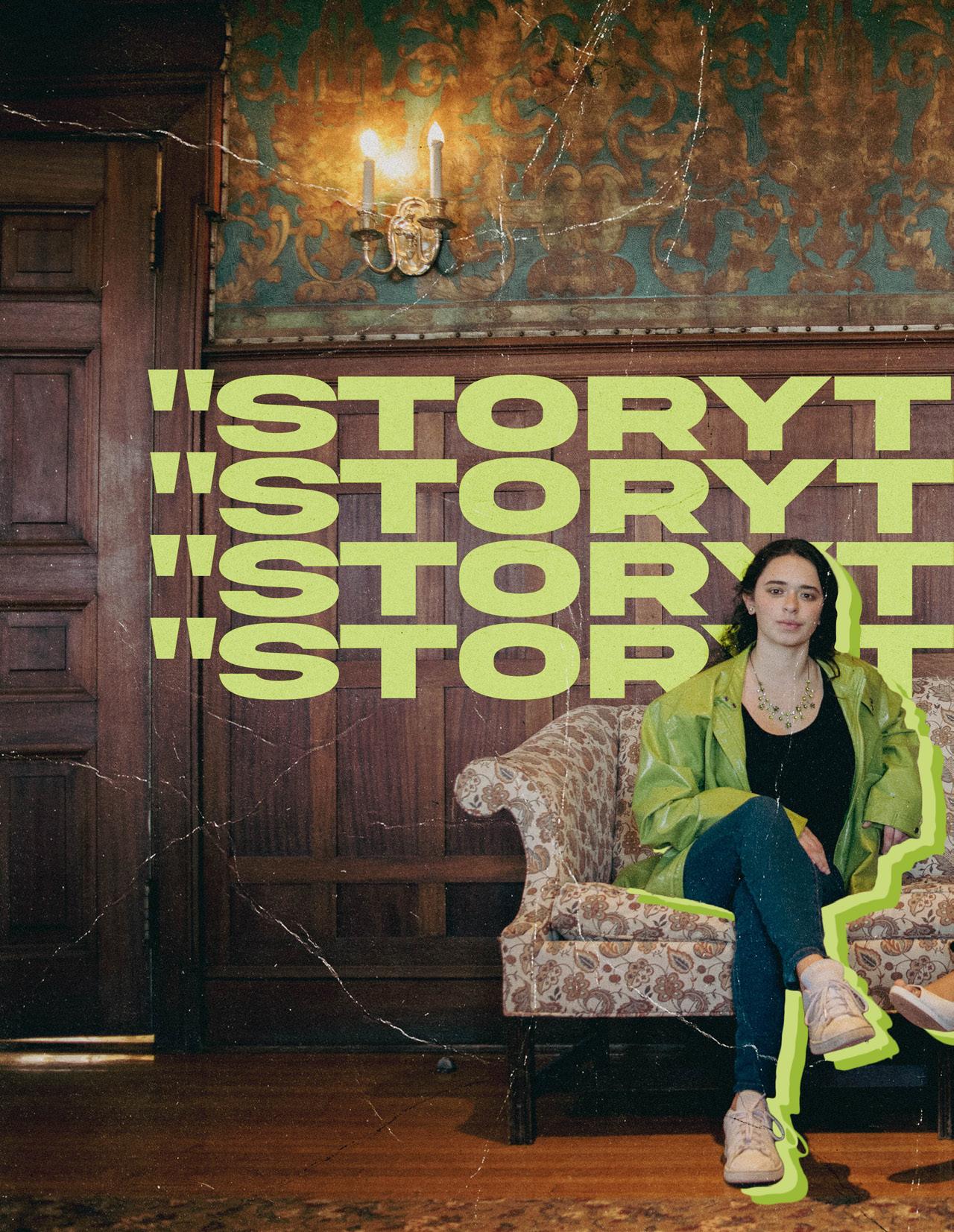
7
writers: Emma DiGiacomo & Eda Keni
copy writer: Lydia Gross
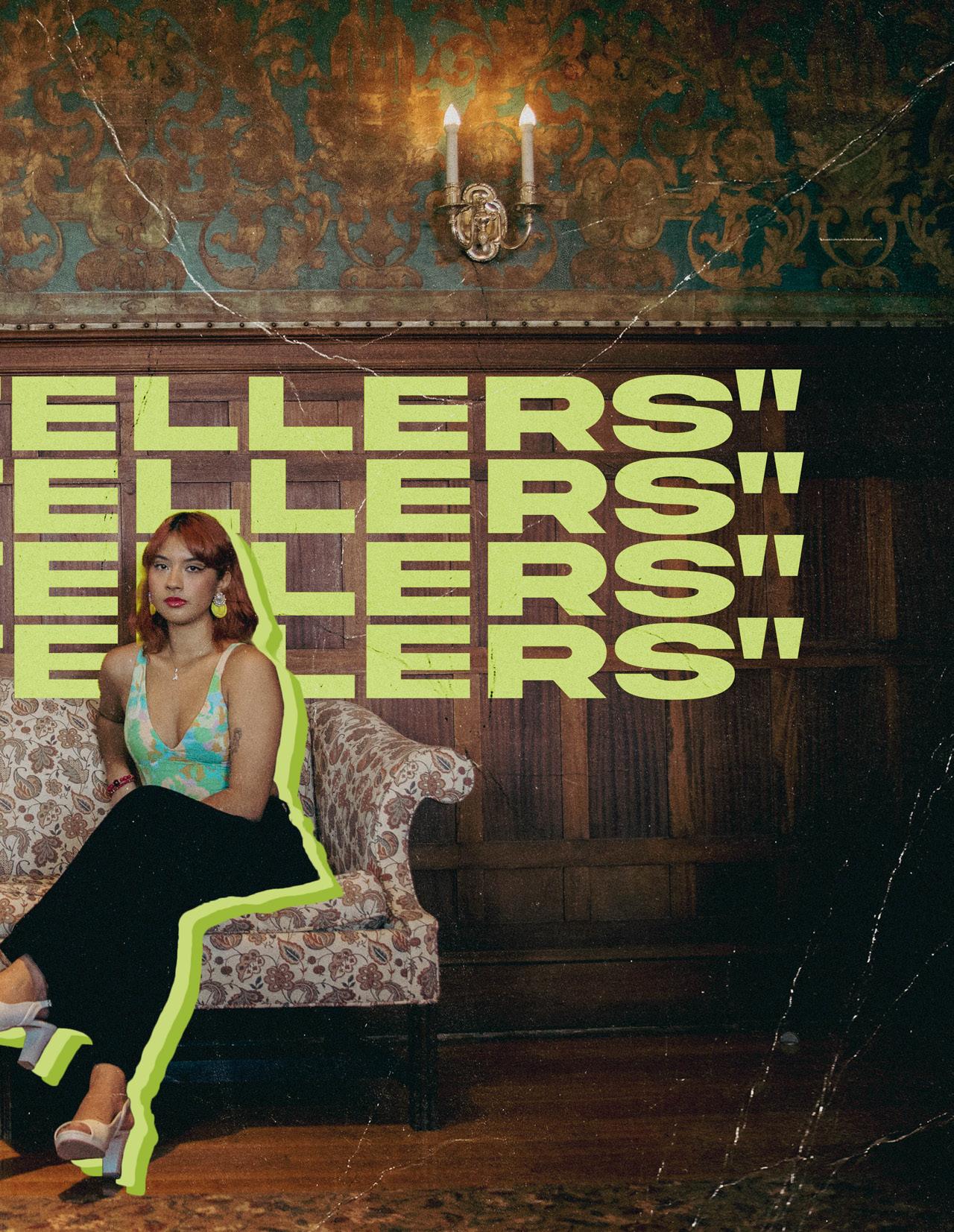
layout: Mekhia Foster
beauty artists: Ashley Cheffolway, Jade Levitin, Abby Lowder
8
In the age of fast fashion, it is becoming increasingly rare to see second-hand clothing as a wardrobe staple. Popular internet brands such as Shein, Romwe, and Cider push out a multitude of new items daily, cultivating a constantly changing arena of styles and trends. Not only does fast fashion leave an environmental footprint in waste production, disposal and water consumption, but it also fails to create ethically-made, lasting styles. Hamilton students work against this narrative by sporting thrifted and handed-down looks. Take Merrill, who explored the thrifting scene of Copenhagen, Denmark, while studying abroad. Merrill came across a ski jacket at a vintage shop, and she immediately fell in love with the piece. Combining color blockings of purple, pink, and green, the jacket traveled back home to the U.S. with Merrill stuffed on a RyanAir flight. As a constant reminder of her time abroad, Merrill’s second-hand experience represents how memory and sustainability often go hand in hand.



































Sofi’s jewelry essential is also a prime example of this: she wears a necklace that her parents bought for her when they came to visit while she was studying abroad in Stockholm. Her family found themselves in a small boutique owned by a woman, originally from Minnesota, who hand-made all the jewelry in the shop herself. The necklace is not only Sofi’s favorite color, green, but it reminds her of comforting memories no matter where she is. When she wore this necklace while in Stockholm, it reminded Sofi of the U.S. and consoled her. Now, when Sofi wears this necklace in the states, she fondly remembers Sweden and the good times she enjoyed there. The necklace carries significance for Sofi anywhere she travels to and is a meaningful reminder of places she has called home. Her parents’ gift proves sustainable even though it was purchased first-hand, as Sofi will wear this necklace for a lifetime.





9
Isis is styled in a silk scarf gifted from her mother. Made up of a collection of vivid yellow, purple, and pink patches with an embroidered flower pattern, the scarf makes a bold impression. As Isis explained, the scarf was gifted as a going away gift by her mother, who has a matching one with complementary colors. Her mother describes the scarf’s patterns as a representation of Isis’ bright and vibrant energy. Often worn to complete a look for a dinner with friends, a theater excursion, or to other fancier occasions. Isis styles the scarf to match every event. Patrick wears a bright yellow jacket, which he bought second-hand when he visited his friend in Stockholm while studying abroad. He was initially drawn to the jacket’s color, and only afterward did he realize it could also be converted into a vest. Patrick explained that the garment has lots of buttons, large pockets and can be styled in many different ways. He also realized a week after he got it that it had a hidden hood, which thus characterized this piece as the “gift that keeps on giving.” Patrick also chose to sport an alien bucket hat, which he bought second-hand in New York City. He recalls originally buying it for a friend as he was throwing a “Cowboys versus Aliens”-themed party, but decided to keep it for himself after his friend forgot it at his house. He likes this hat because it brings him joy, stating that he thinks aliens are funny.














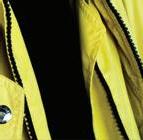


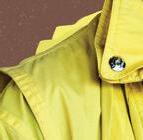






















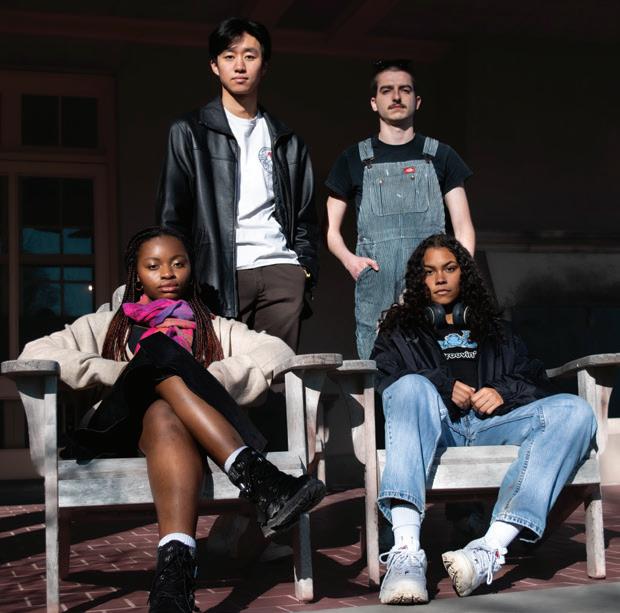


10
While thrifting experiences often take the form of an adventure in an unfamiliar place, hand-me-downs can also serve as a reminder of home. Take Sean, who dons a small bracelet made from black rope with a golden pendant in its center. As Sean pointed out, the etching in the pendant features the Mandarin symbol for the Year of the Horse. Gifted from his parents, the bracelet is representative of both Sean’s birth year as well as his Chinese heritage. Sean rarely wears the bracelet on a day-to-day basis, but rather for special occasions due to its emotional significance. Despite not being a staple in his everyday wear, Sean fondly recalls the places the bracelet has traveled with him. Most notably, it has moved from Sean’s hometown of Chicago to his new “home” at Hamilton College, providing him a part of his parents to always carry. Nathalie shares a similar experience with her look, as she chose to style a pair of earrings from her godmother, who gifted them to her when she went to visit Honduras for Christmas. Nathalie explained how she recently started getting into jewelry, so these earrings have been a nice way to add a sentimental touch to her outfits. Nathalie loves to accessorize and believes that wearing pieces like the bright, yellow earrings allow her to make a statement. Importantly, Nathalie also described how these earrings help her feel connected to her Honduran heritage whenever she wears them.


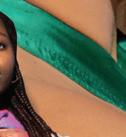
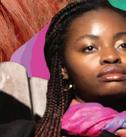



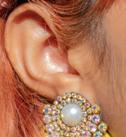






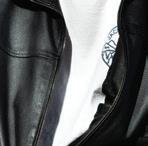


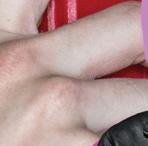





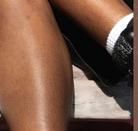


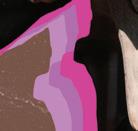

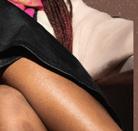
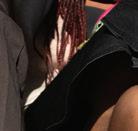







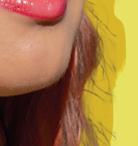



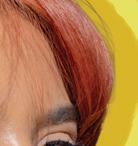



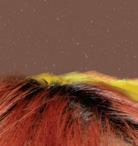








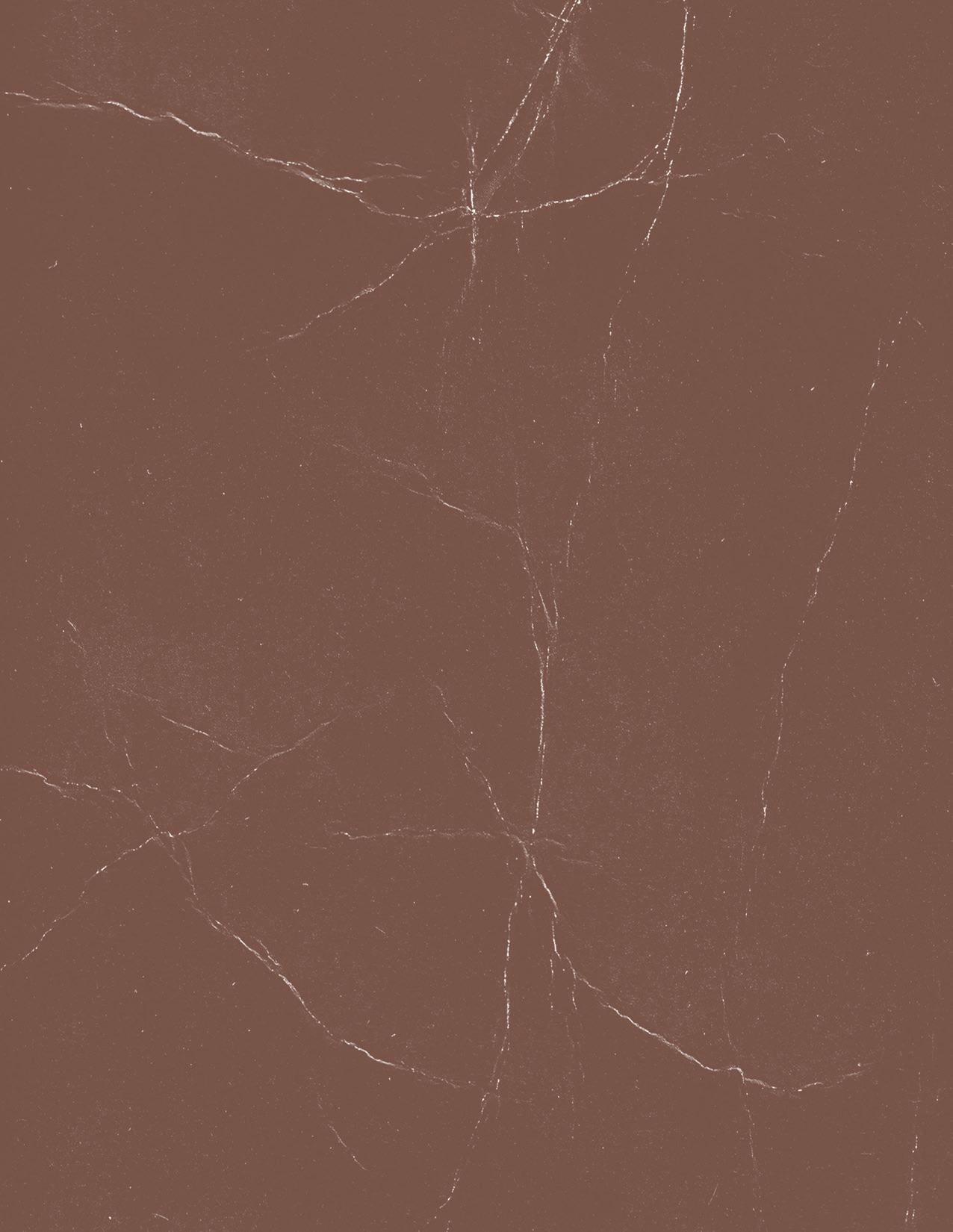
11
Clothing passed down through generations tends to hold an emotional significance to the wearer. Aiyana chose to model one of her dad’s old jackets from the ‘90s. On a particularly cold day over winter break, Aiyana’s dad offered her his old jacket - and she has put it to good use during chilly periods ever since, mentioning that she wears it almost every day. Aiyana has her parents’ birth years tattooed on her two wrists, and explained that this jacket is another way that she is reminded of her strong connection with her parents. Aiyana added that her dad attended Syracuse University and wore this same jacket during his college years, so the fact that Aiyana is also carrying it with her through her college years makes it extra meaningful to her.












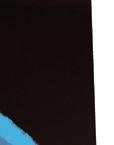




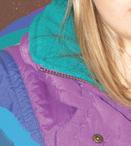




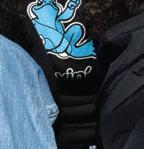

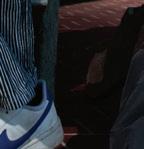
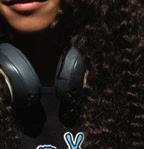
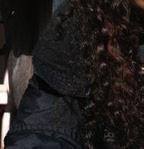
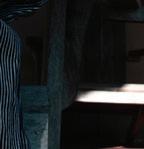
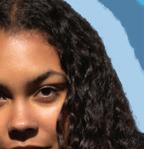
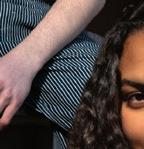
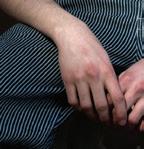

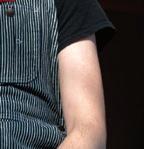
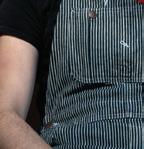




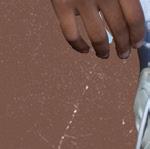


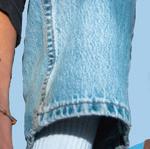

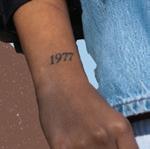



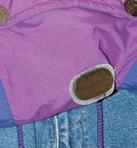

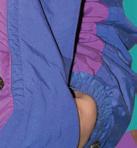
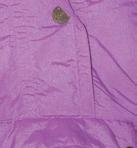

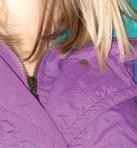











12
Beauty Sleep
BY LYDIA GROSS
Models: Aparna Patnaik, Kaylee Martin, Charlotte Clark, Owen
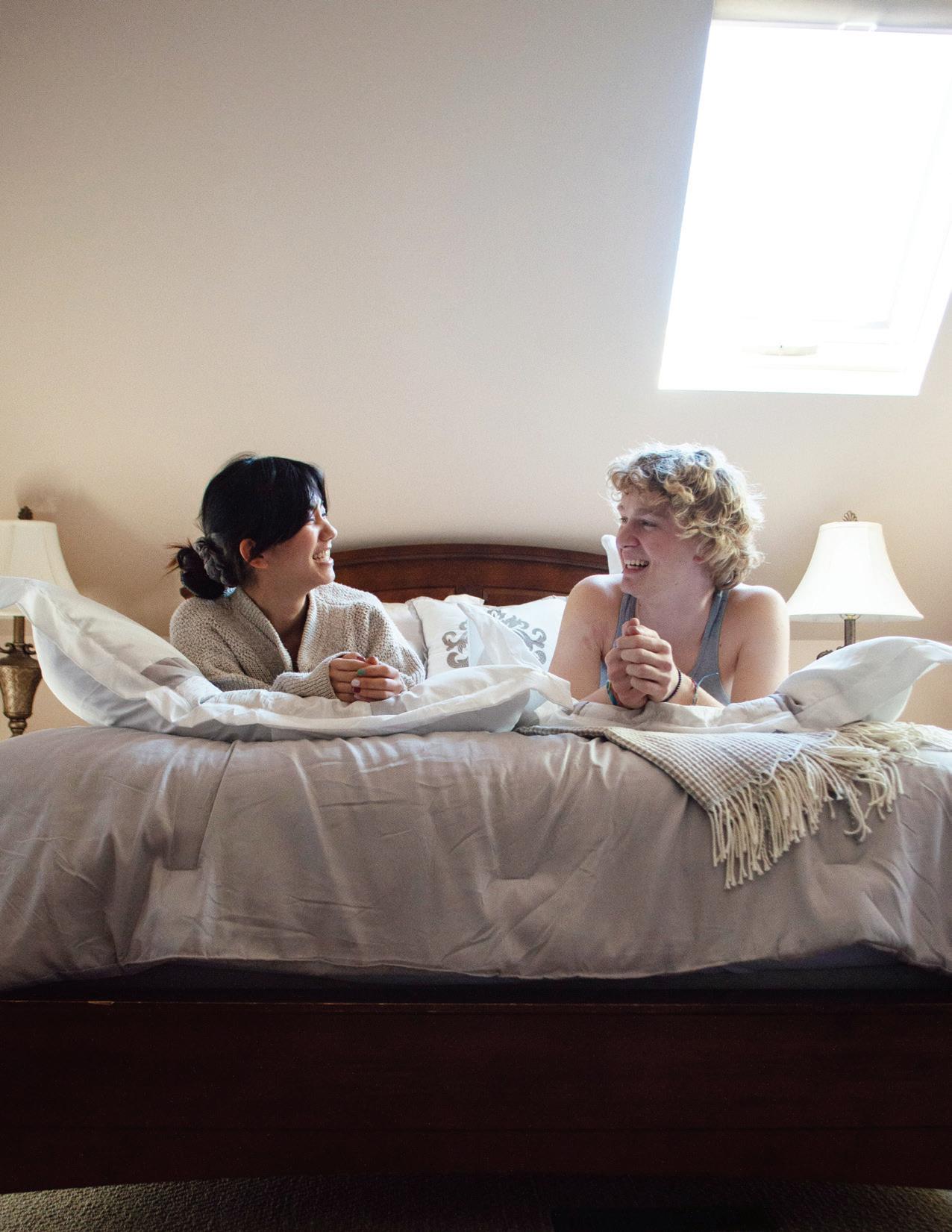
Dzierzgowski, Peter Hinkle, Sophie Christensen
Copy%Editor: Caroline Boyd


Layout%Designer: Anna Song


13
Whether we’re tucking in for the night or sitting at the computer first thing in the morning to complete some work, we’re usually dressed in our pajamas. No matter our plans for the day or what the weather calls for, a day doesn’t pass where we aren’t wearing some form of sleepwear. Sleepwear serves many purposes, but its most important goal is to provide comfort. Comfort varies from person to person, and the variety of pajama selections fits almost every need. Since we start and end each day in sleepwear, choosing the right pajamas is important for everyone. Sometimes the key to comfort is keeping it simple. Whether that means wearing a pair of flannel pants and a t-shirt with your high school logo on it to bed, comfort is a judge-free zone. A pair of underwear is also a great go-to for some people. Sleep is usually a solitary activity–we’re not presenting ourselves to the world, but instead trying to get a restful eight hours before we face another full day of activities. Therefore, it doesn’t matter if your preference for sleepwear is no sleepwear at all. Comfort looks different on everyone, and no one will judge your favorite pajamas. For others, getting ready to go to bed is an event. With the rise of “Get ready with me” TikToks, another trend has emerged: “Get unready with me.” In these videos, creators will walk their audience through their intricate skincare routines and share tips about what helps them unwind for the night. They’ll usually end the video showcasing their go-to pair of pajamas that are somehow simultaneously chic and comfortable.

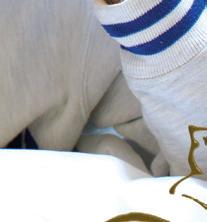
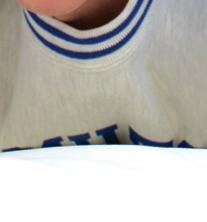



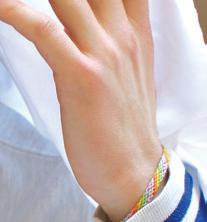

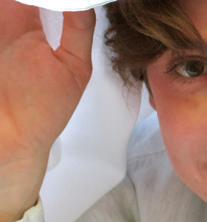



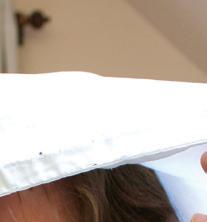

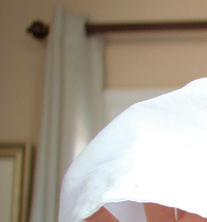






Stylists: Zoe Carovano, Kenna Smith, Sammy Higgins, Amaris Martins, Cole Kuczek, Ella Strasser, David Sandoz





































Photographers: Amanda Sedaka, Kaitlyn Fudge



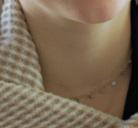





Beauty%Artists: Eva Pearlman, Claire Harpel, Bethany Fell, Abigail Lowder



































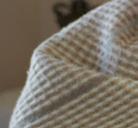



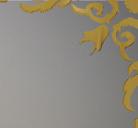



























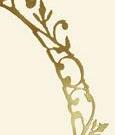




15
Pajama sets are a great way to achieve this duality. Whether pinstriped or featuring a cute pattern, sets are an amazing way to stay comfortable while feeling put together. Brands like J-Crew provide a wide selection of pajama sets that differ in material, patterns, and lengths. Some of their most classic sets are long-sleeved, plain navy, or pin-striped button-downs. In addition to being surprisingly soft, these sets make you feel stylish as you’re about to slip into bed. These sets don’t have to be simple, as J-Crew pajamas come in multiple pretty prints like calico, floral, and gingham. For more budget-friendly options, Target also has an amazing selection of pajamas. From cozy striped sweatshirt sets to cheetah-print camis and shorts, Target delivers options for anyone’s comfort and style needs. Target also provides knit long-sleeve and shorts sets that come in various colors. Material is crucial when it comes to selecting your perfect pair of pajamas. Just like patterns, the material choice varies from person to person. Some people find a pair of cotton shorts most comfortable, while others might opt for a silk set. Others may be a fan of viscose, a slightly sustainable alternative to cotton or polyester. Fabrics like linen and nylon are great for pajamas in the summer because they keep your body cool and comfortable. In the winter, people will break out their flannel and fleece pajamas to keep them warm.

































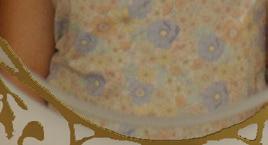

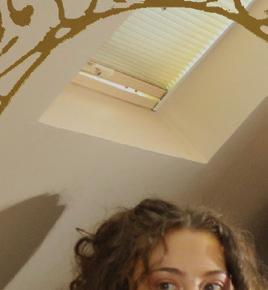





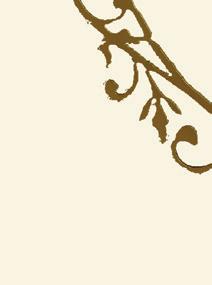






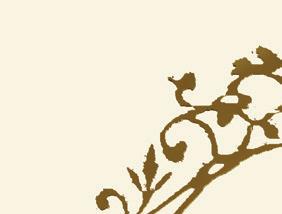
16
If you want to be chic, nightgowns are an incredibly stylish option for anyone. Just think of Audrey Hepburn’s nightgown in Roman Holiday – while it doesn’t look that comfortable, it is a glamorous alternative for bedtime. Sites like Lands’ End feature cute, patterned t-shirt nightgowns that appear more effortless to slip into compared to Hepburn’s gown. Sleepwear accessories like eye masks and robes can also spice up your bedtime look. In addition to being chic, these accessories are practical as sleep masks keep out the daylight, and robes keep you warm. Sleepwear and pajamas are prominent in movies and television – the mattress surfing scene in Princess Diaries 2. The characters in this scene look stylish and happy in their pajamas, which is all you can ask for from sleepwear. Pajamas come in all different shapes and sizes, as comfort is never a one-size-fits-all. It doesn’t matter which material or pattern you choose, as long as it makes you feel comfortable and makes sure you’ll get a restful night’s sleep. Therefore, getting ready for bed should be an event you put time and effort into. Whether your priority is to look chic while slipping into bed or to drift away comfortably, pajamas can fit your every need.

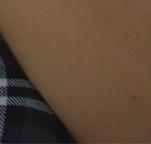


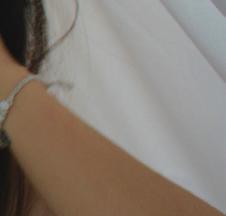


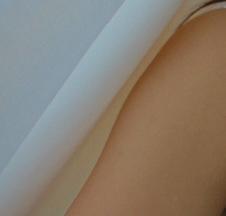

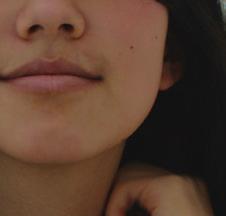



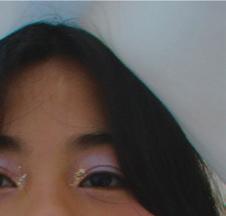
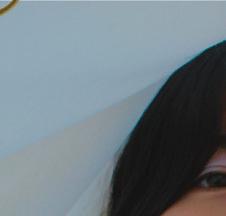
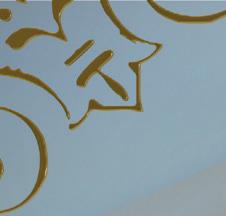
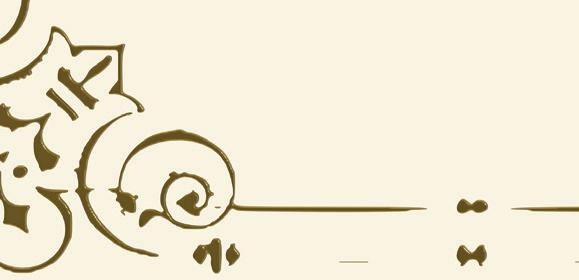


The End





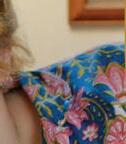
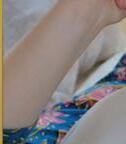

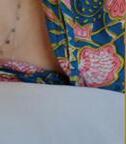

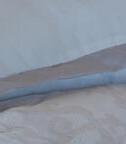












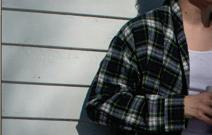

















































































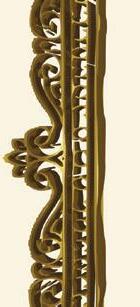



The rising popularity of the nose piercing among younger generations can be attributed to how piercings and other artistic forms of self-expression have become more socially acceptable. Bridge, nostril, and septum piercings have grown in popularity, with trends emphasizing facial piercings on social media. The placement of each piercing is based on personal preference, each bold and unique in its own right. However, when tracing the origins of nose piercings, it is clear that they carry a different meaning in 2023 than in the past.
The practice of piercings originated in ancient cities all over the world. The body has been viewed as a canvas for thousands of years, with modifications from tattoos to piercing ranging in a variety of cultures. Today, nose piercings can be seen as an adornment and a stylistic choice, but the origin of the nose piercing is rooted in cultural tradition.
Though there is a conception that nose piercings originated in India, records tie that history to the Middle East, eventually arriving in South Asia with the Mughals in the 1500s. Ancient Ayurvedic text cites the piercing of the left nostril facilitating the alleviation of menstrual pain and easing childbirth due to a pressure point connected to the reproductive system. In Hinduism, the goddess Parvati is famously depicted wearing a nose ring to symbolize her marriage and domesticity.



Two popular forms of nostril piercings in India are the nose ring, called a nath, and the nose stud called the phul. The hoop, which sometimes has two or three pearls strung through it, is mainly a symbol of married women, while unmarried women wear a smaller hoop around two sizes smaller. Throughout India, different styles of nose rings are affiliated with specific regions, for example, the North Indian lakthan, a large hoop embellished with gems attached to a chain linked to the hair, or the Himalayan bulak, a septum piercing with a triangular detail hanging above the upper lip. The nose ring is culturally prominent in Indian communities and represents womanhood, grace, and for some, even rebellion. In rural areas of India, piercings also signify devotion to particular deities and ward off disease by piercing the skin with hooks.
Colonialism allowed for the appropriation of South
Asian practices in the West, invoking a method for European women to achieve a more exotic look. After India gained independence from Great Britain, the country experienced an influx of Western travelers during the 1960s and 70s during the “free-love” period. “Again, nose rings started to pick up; it was definitely a mimicry of the practices of South Indian women having their noses pierced. Western women wanted to adopt that into fashion,” says historian Paul King.
In the mid-1970s, with the rise of punk culture, simple safety pins, and titanium were used to fashion a particular image and self-expression. Early members of the punk movement adopted nose piercings to create affinity with their communities and as a rebellion against conservative values. Today, nose rings can be seen as ways of accessorizing and expressing style rather than cultural and social statements. For instance, the septum piercing can be seen in musicians such as FKA Twigs and Rihanna. It is essential to recognize its historical and cultural significance, despite the Westernization and commodification of the nose ring.
nose ring.

Globe, London, and The New England Farmer Horticultural Register. “A Plea for the Nose Ring.” ProQuest, vol. 61, no. 17, 1882. ProQuest, www.proquest.com/docview/127867963?parentSessionId=ZDT1Tqg%2F6jCOQbBoiQCUaVFNmzDNsO7UtUcs9RI%2B7MA%3D&pq-origsite=primo&accountid=11264. Accessed 16 Mar. 2023.
Hashempour, Parisa. “A Brief History of Piercings and Their Controversial Beginnings.” Dazed Beauty, Dazed, 3 Mar. 2021, https://ground.news/article/a-brief-history-of-piercings-and-their-controversial-beginnings.
Jamal, Butool. “Small Treasures: The History and Legacy of Indian Nose Piercings.” Only Natural Diamonds, 22 Jan. 2023, https://www.naturaldiamonds.com/style/natural-diamonds-nose-pin-history-legacy/.



Starkman, Emily. “History of Nose Piercings | Painful Pleasures Community.” PainfulPleasures, 11 June 2015, https://www.painfulpleasures.com/community/help-center/piercing-information/history-nose-piercings/.


Ryder, Andrew, et al., editors. Romani Communities and Transformative Change: A New Social Change. E-book ed., London, Policy Press, 2021. Library.oapen.org.






















19
Field FROM TO





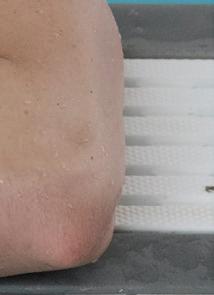
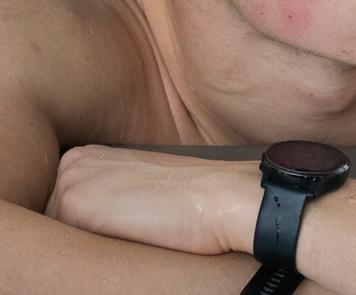
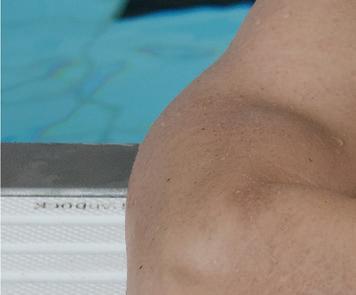



 by caroline boyd
by caroline boyd
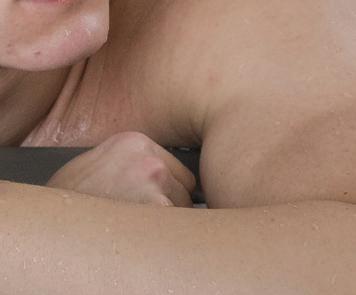


It may seem difficult to maintain individual style when sporting a Hamilton uniform. Still, Maeve Luparello (lacrosse), Drew Frey (swimming), Jay Schlaefer (baseball), Kylie Oblak (cross country and track), Maggie Nichols (volleyball), and Maggie Mieczkowski (figure skating) all find ways to personalize their looks. Athletes engage in game/meet-day rituals to bring flair to their sport. Whether they listen to music or wear lucky socks, these sporty spices allow their individuality to help them get





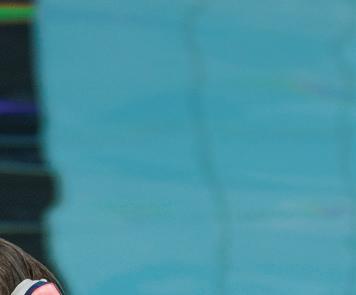
 stylists: Sammy Higgins, David Sandoz, Amaris Martins, Zoe Carovano, Pedro Lacerda, Ella Strasser layout: Mil Fienco; copy editor: Hadley Noonan
stylists: Sammy Higgins, David Sandoz, Amaris Martins, Zoe Carovano, Pedro Lacerda, Ella Strasser layout: Mil Fienco; copy editor: Hadley Noonan
Lacrosse has shaped Maeve’s identity and personal style. Maeve flaunts a sleek black base layer, a cropped olive green vest (her favorite color), and Karhu sneakers in her athleisure look. While she sports a dynamic style off the field, Maeve will opt for athleisure during her post-workout errands. Although she prefers fitted and cropped athleisure, she wears all her gameday attire oversized and pulls her hair into a low pony under her goalie helmet. Even in uniform, Maeve finds ways to make it personal to her. She wears all-white gear, from her turf shoes to her gloves, and on her stick is a butterfly symbolizing Morgan’s Message, a mental health awareness initiative for athletes. Before games, Maeve always eats a peanut butter and jelly sandwich to fuel her body. Since she was little, she and her dad would grab ice cream after her games, and the tradition continues when he comes to her college games. Lacrosse has taught Maeve to work with many personalities, and she practices perseverance on and off the field.
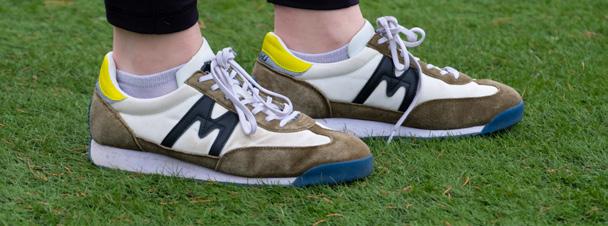
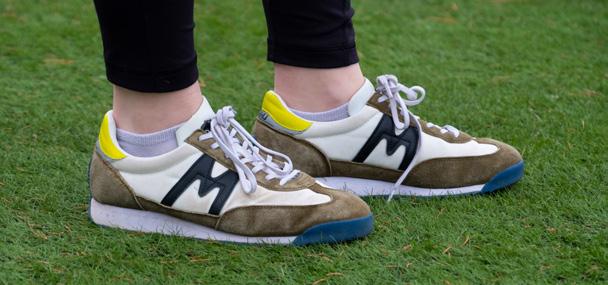

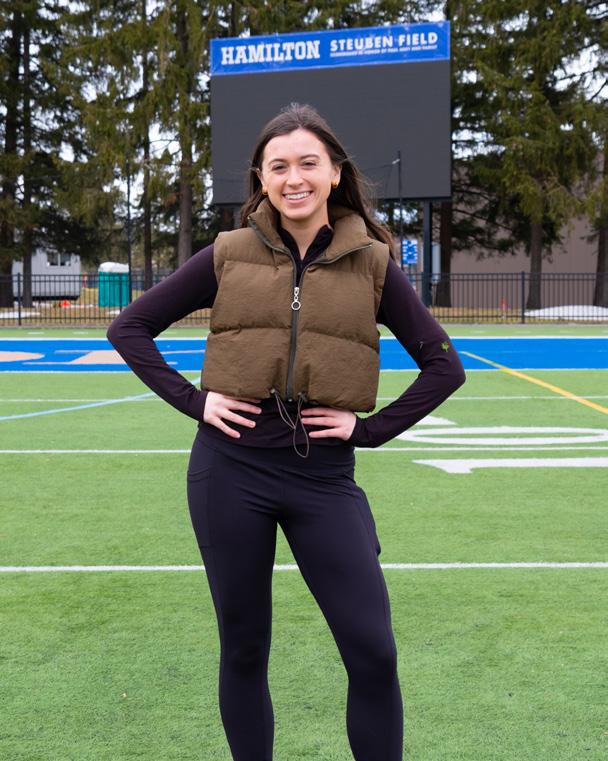

Maeve
21
photographer: imani mitchell model: maeve luparello
Drew




Drew’s pre-swim athleisure keeps him cool on the deck while giving him an effortless ready-for-anything style. He believes that athleisure doesn’t have to look as dull as a gray sweatsuit when done right. Drew says athleisure can be sleek and sophisticated; he enjoys loose, easy-to-take-off clothes. His joggers are from Young LA, one of his favorite fitness brands. Before his swim meets, Drew listens to middle school-era EDM (think “Levels”) to get himself in the zone, but once he puts the AirPods away, it’s just him and the water. He wears his team suit in his second look, but he has a whole collection of fun speedos; one of his favorites is decorated with avocados. Swimming has taught Drew discipline, and his achievements in the pool help him mentally overcome challenges in his everyday life.
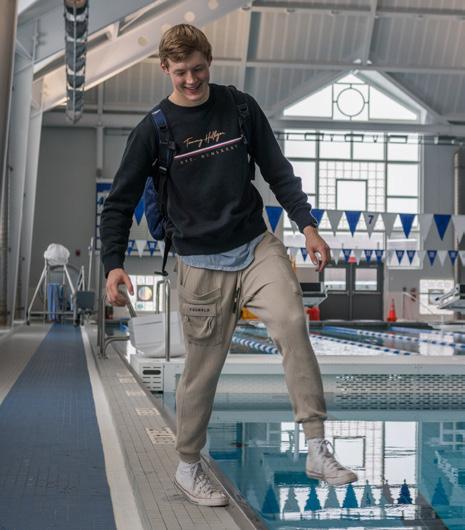
22
photographer: markos lissarrague model: drew frey
For Jay, baseball is all about his team. The center fielder and pitcher appreciates his teammates’ support through his best and worst days. Thanks to his team, Jay feels confident to express his style on and off the field. Jay prefers wearing sleek pants and thin long-sleeve hoodies over athleisure. His look, pairing a Keith Haring tee with jeans, represents his preference for a style that helps him feel put-together. On game days, Jay always wears a crystal around his neck, reminding him to stay positive. He also wears a colorful collection of bracelets on his wrist, showing his style on the field. Early in his college baseball career, Jay suffered a painful shoulder injury that required surgery, but he has made a comeback as a team starter and is pitching again. With a bit of grit and help from his team, Jay is back and better than ever, bringing his flair back to the game.
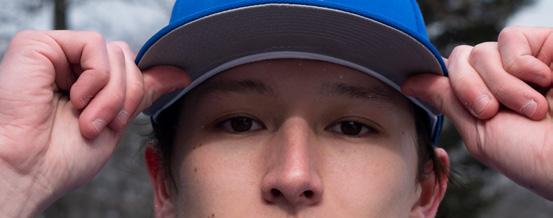
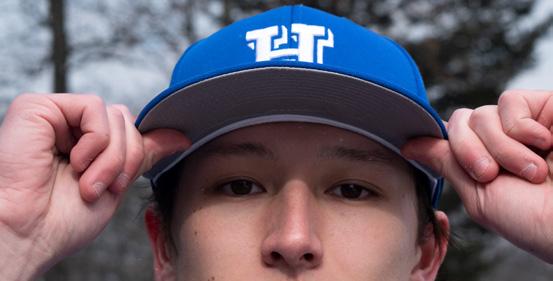

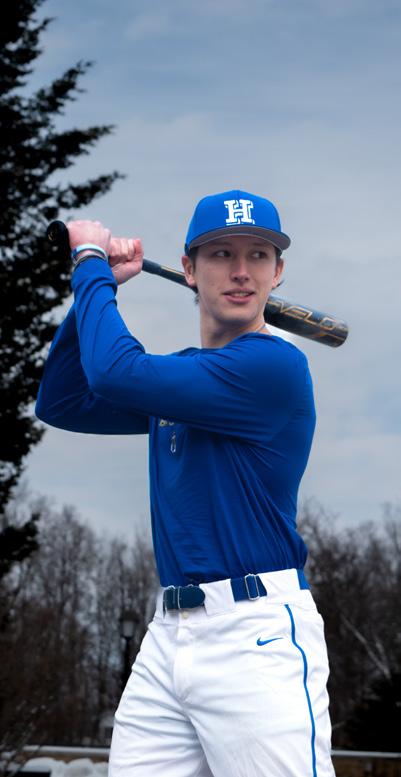


23 Jay
photographer: varvara aristakesyan model: jay schlaefer
Maggie Nichols has a foot in two different worlds. As an artist and a middle hitter for the volleyball team, Maggie’s style reflects her two passions. Some days her more artistic self shows through in pieces such as the fur coat she sports. On other days her athleisure looks dominate her wardrobe. She incorporates details like her multifunctional Lululemon long sleeve and often blends athleisure with funkier elements to create a unique hybrid style. At practice and on game days, Maggie loves using jewelry to maintain her style, often accessorizing with studs for games and a unique gold necklace for training. She is also a pro at braiding her hair – in the shoot, she tucks two french braids into a high ponytail to keep her flyaways at bay and her head in the game. Maggie notes that many athletes prefer hype music before a game, but she prefers calming music to soothe her before she competes.
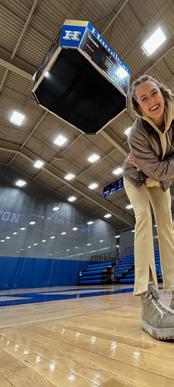
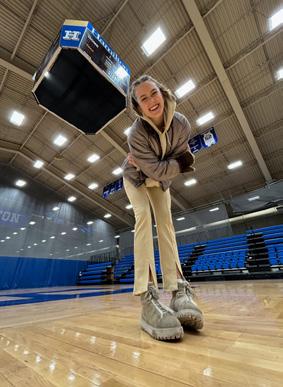

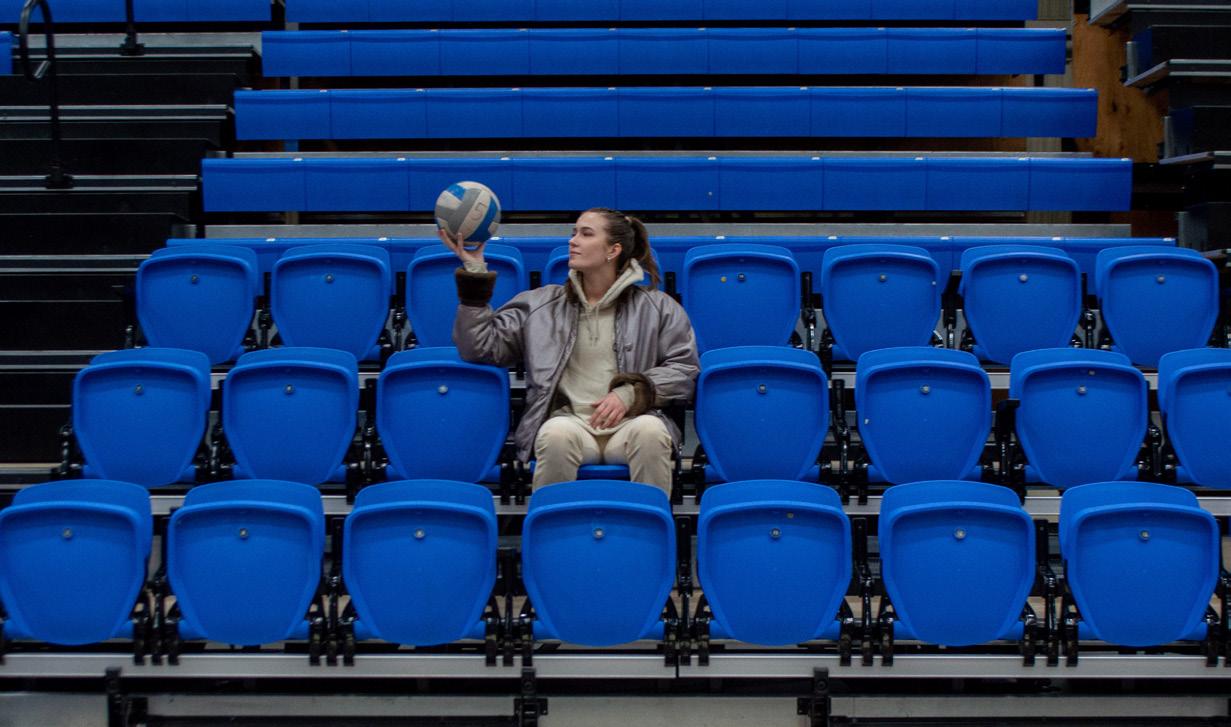

24 Maggie
photographer: kaitlyn fudge model: maggie nichols
Kylie
Kylie, known to her Instagram followers as @KylieRunsSmiley, loves color in her running apparel. The track and cross country runner believes her clothes keep her feeling confident and happy on long runs. She is seen wearing her practice apparel: Nike spandex and a Nike sports bra, paired with the lucky socks she has worn in every meet since high school. Fitness brands gifted her other outfit, thanks to her role as a fitness influencer on Instagram. Her account seeks to inspire endurance athletes to care for themselves and live a balanced life. If you give her a follow, you’ll see her signature bright colors and infectious smile. Off the track, Kylie enjoys wearing comfortable clothes that afford her a range of motion, so she is always ready for what comes next.
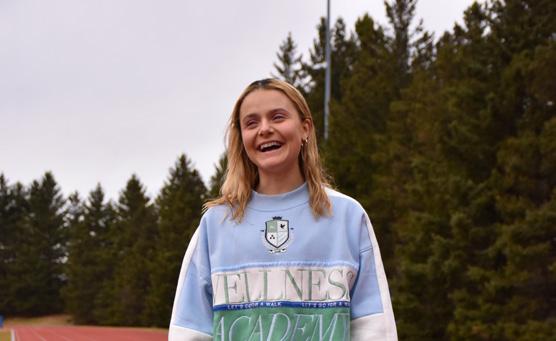

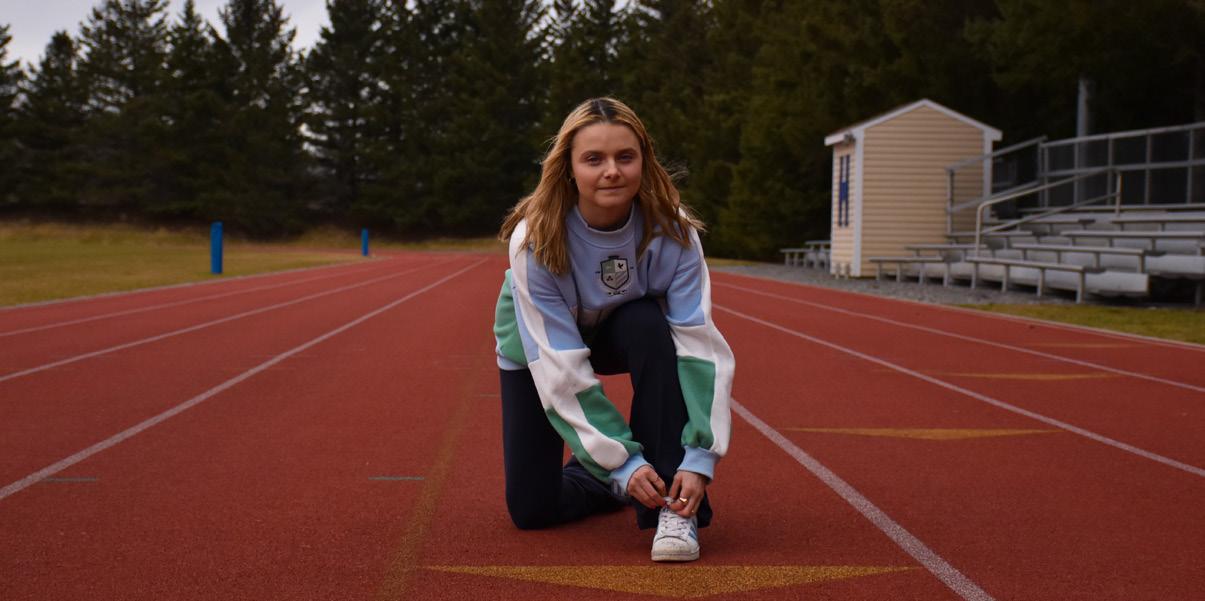
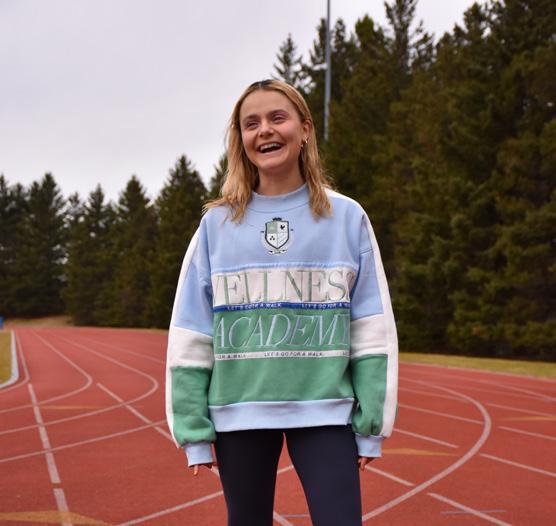
25
photographer: sophia viscarello model: kylie oblak
Ice skating has helped Maggie Mieczkowski expand her style. In skating, costumes affect how she moves and feels on the ice and can transform a routine. Maggie embraces the glitz of competition dress and has started to incorporate the dark-colored fashions she wears to practice into her everyday clothing. Maggie is featured wearing jeans and a black long sleeve for her everyday look. Maggie also enjoys wearing athleisure around campus – it helps her get from Bundy to class and practice in a sleek and effortless fashion. Even during competition, Maggie always wears an opal necklace on a gold chain; its constant presence reminds her of her good and bad days. Because she does not compete in gloves, Maggie practices without gloves several weeks before the competition to help her access her competition mindset. The individual nature of ice skating has taught Maggie resilience, an attribute that she applies to her academics as well.

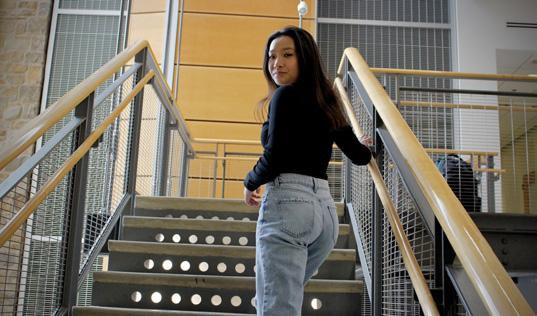



26
Maggie
photographer: amanda sedaka model: maggie mieczkowski
K-BEAUTY HIGHLIGHTING
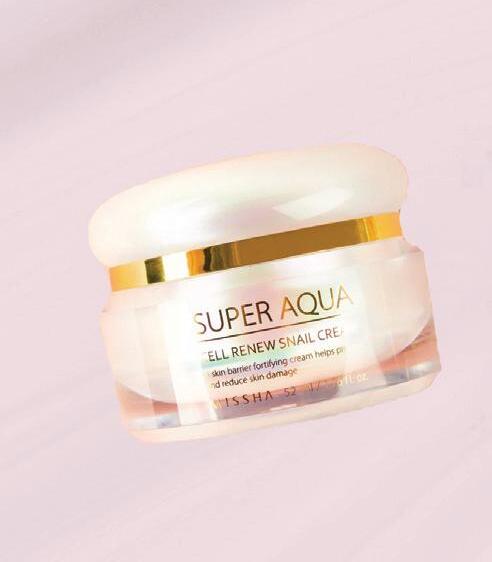





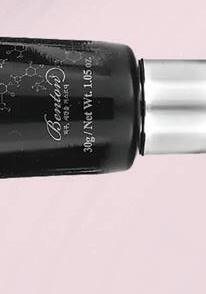
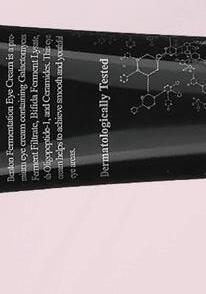

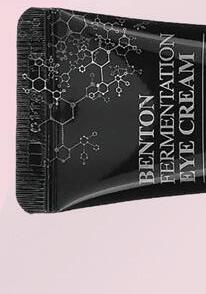





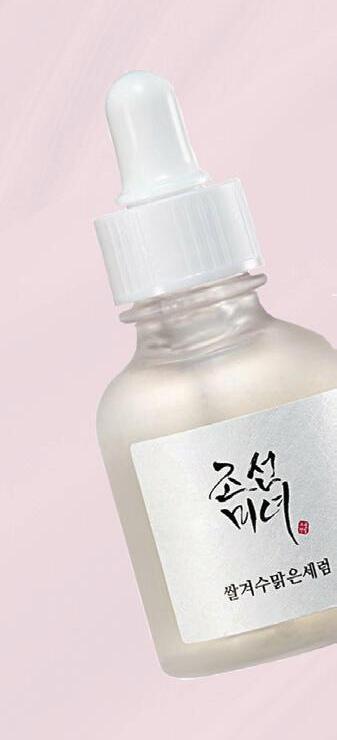



























 LAYOUT BY SOPHIE CHRISTENSEN BY SADIE CHASE-TATKO
LAYOUT BY SOPHIE CHRISTENSEN BY SADIE CHASE-TATKO
27
People around the world are fond of Korean skincare products. Viral skincare routines, simplistic yet cute packaging, and stellar product reviews are reasons Korean skincare has taken over people’s medicine cabinets. But what are the best products to buy, and how can we consume them ethically?
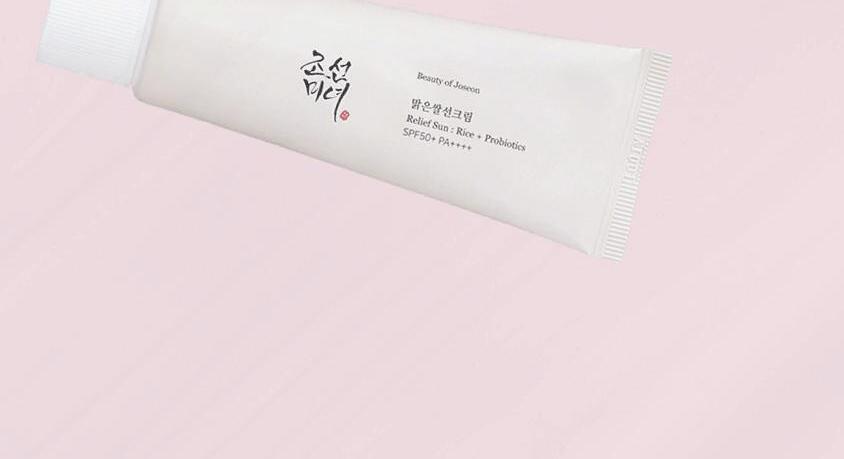
K-beauty trends are a product of Korean culture which highly values attentive care of the face and body. In an interview with Vogue, Charlotte Cho, co-founder of a large Korean skincare company, Soko Glam, explains the allure of Korean skincare products. Cho explains that “at a young age, Korean children are taught the importance of moisturizing, exfoliating, cleansing the skin thoroughly, and protecting their skin with SPF.” International customers are drawn to the simplicity of Korean skincare products that are often naturally derived and scentless, both factors that drive successful results on the skin. Many of these products contain retinol, a member of the Vitamin A family that helps the body develop and maintain skin membranes. Vogue explains that other natural ingredients include olive oil, mugwort extract, snail mucin, chamomile tea, avocado, and aloe. In a holistic sense, Korean skincare aims to defy aging, protect the skin barrier, and create a natural glowy, dewy appearance with SPF.
Popular products on the market today include COSXR’s Advanced Snail 96 Mucin Power Essence because of the hyaluronic acid prominent in snail mucus, which has moisturizing properties. Benton’s Fermentation Essence contains fermented tea, which effectively reverses the appearance of aging skin and is appreciated for being vegan and sustainable. Beauty of Joseon creates various popular products, including the trending Glow Serum, known for containing brightening niacinamide and antioxidant-rich turmeric. Perhaps the most popular product in Korean skincare is Joseon’s Relief Sun: Rice + Probiotics, which contains SPF 50+ but feels as smooth and relieving as Cerave’s lightweight daily moisturizer.
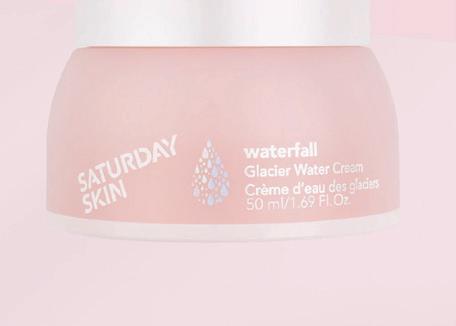
There is an allure to Korean skincare as people in a technological, corporate, and capitalistic world struggle to remain healthy and connected to nature. Korean brands have been lauded for sustainable packaging and products, such as opting for wash-off masks instead of single-use sheets. In addition, Korean skincare and cosmetics are derived from natural ingredients, acids, and oils that create uncontaminated, clean, and glowing skin, but is this global market ethical and sustainable? Snow White and Asian Pear is a blog reviewing Korean, Japanese, and Taiwanese skincare products. In an article about the ethics and marketing of Korean skincare, the author Cat Cactus interviewed Korean women in Korea and internationally on their thoughts on the growing popularity of Korean skincare products. Amy, a Korean woman living in Korea, emphasized that “there’s literally no negativity regarding the fact that people of other races use [K-beauty] products here.” Pia, a Korean-Australian food, travel, and beauty blogger, stated that she viewed Korean skincare “as a consumable product, I just assumed they were products for people with skin.” Pia explained that she views Korea as a country long known to manufacture and export products and that skincare is just another merchandise. Cactus concludes that while Amy and Pia are only two perspectives, we should heed their warning about the dangers of consumerism.
To prevent culturally appropriating Korean trends, culture, and customs, international consumers must purchase Korean products knowing where they originated from and for their helpful ingredients and great results. Cactus emphasizes that ethical consumption boils down to knowing where your purchases come from and how they will impact others.
As Korean beauty products continue to surge, consumers should remember to consider their purchases. Another country’s products may seem enticing and different, but they are a part of that place’s culture and customs. Many Koreans in Vogue’s article and Cactus’ blog expressed their excitement. From a consumer perspective, let’s keep this positive mantra going and continue to buy Korean products for the right reasons.
Works Cited
Cactus, Cat. “Is K-Beauty for Everyone? Perspectives on Appropriation and Marketing.” Snow and the Asian Pear, 22 July 2016, http://www.snowwhiteandtheasianpear.com/2016/07/is-k-beauty-for-everyone-perspectives.html.


Murden, Kiana. “These Are the Best Korean Skin-Care Products to Shop Now.” Vogue, 2 Feb. 2023, https://www.vogue.com/article/best-korean-skin-care-products.
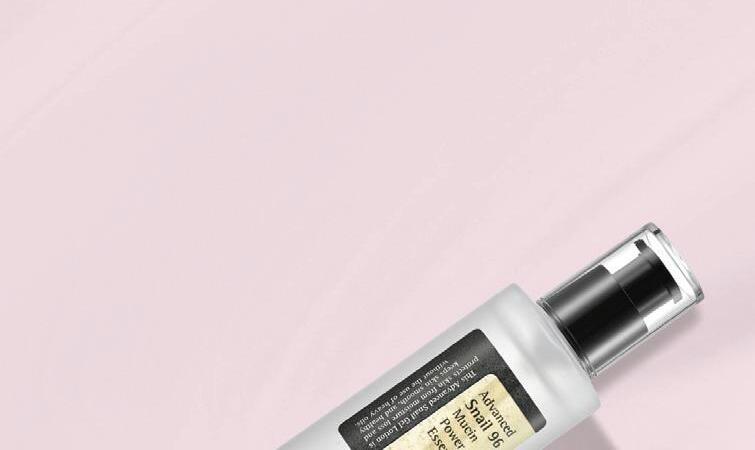
Weinstock, Tish. “11 K-Beauty Trends to Try in 2022.” Vogue, 28 Dec. 2021, https://www.vogue.com/ article/k-beauty-trends-to-try-in-2022.









 White
White
senior spotlight Fran Cannon
by Eda Keni
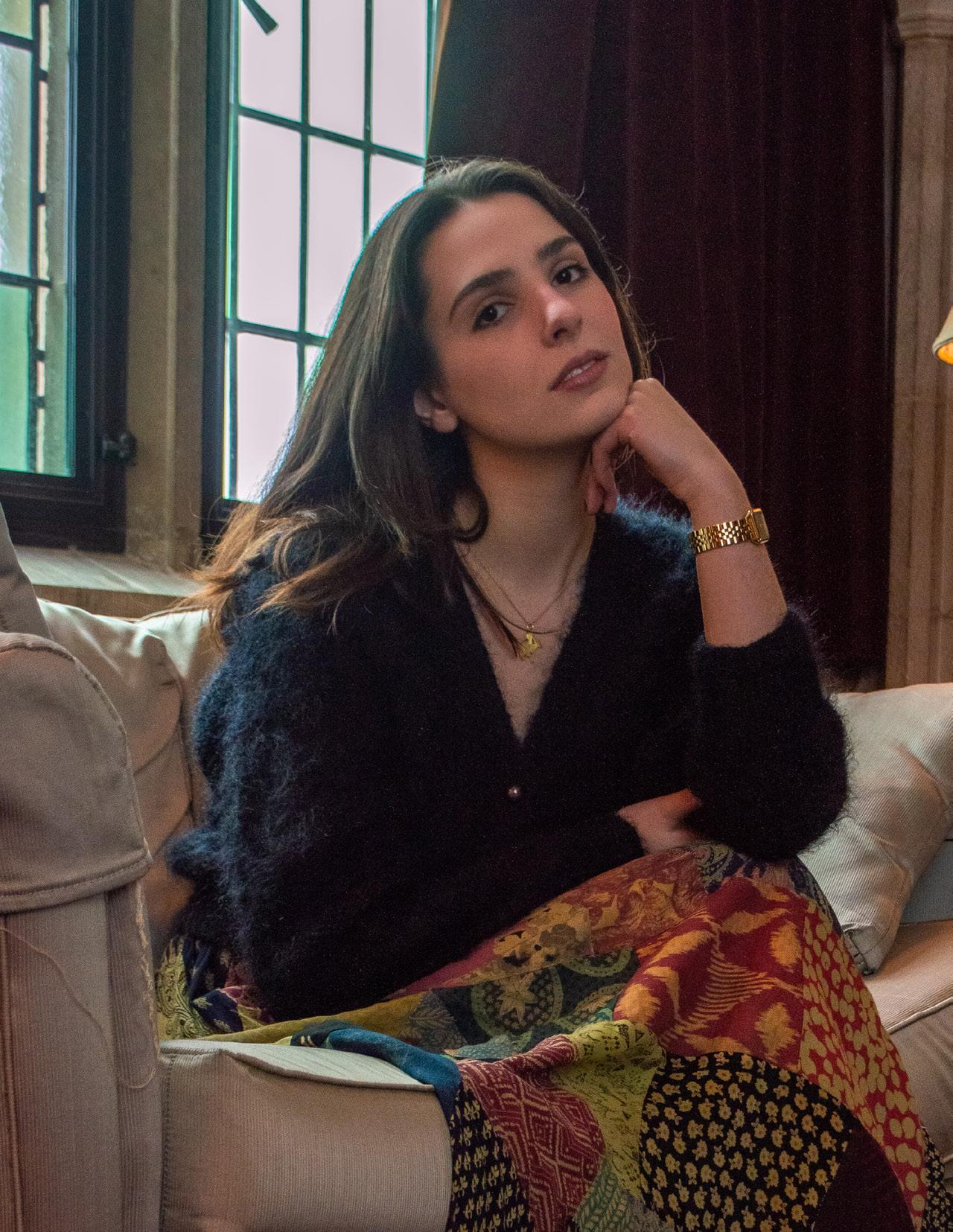
29
In three words, Fran Cannon’s friends describe her as sincere, creative, and passionate. These are evident as she walks to Molly Root in her brown faux shearling jacket, carrying a Bode bag filled with all her pre-determined outfits. Her unique style and the care she puts into crafting her wardrobe, filled with self-made items and thoughtfully-curated, classic, and neutral pieces, reflect the time Fran invests in her looks for the long run. Fran’s effortless style and fashion knowledge inspire many students around campus. Recently, Signature Style had the opportunity to talk in-depth with Fran to better understand the philosophy and inspirations behind her style.
Fran cites her family as one of her biggest inspirations. She fondly remembers that her parents were always okay with her making a mess while doing crafts and created space for her to be herself. At a young age, Fran’s parents enrolled her in sewing classes at a nonprofit called “Sew Green,” which uses recycled textiles to teach sewing. “I got a job there the summer after my sophomore year of high school teaching kids to sew, and it solidified my technical skills because I had to articulate the most basic elements of the sewing process,” Fran said. Growing up, her older sister was a dedicated reader and storyteller who embraced her creativity, which left an indelible mark on Fran. She remembers that her sister always inspired her to dress however she wanted; the duo collected vintage clothes together from a young age.
Fran also draws influences from movies into her wardrobe: Tim Burton’s films and Alice in Wonderland, in particular, have resonated with her throughout her life. When describing a December 2009 issue of Vogue titled Little Girl & Boy Lost from her childhood, Fran commented: “I distinctly remember being inspired by this shoot that retold the story of Hansel and Gretel through fashion photography. It really tapped into my interest in the darkness of childhood stories and whimsical motifs that have continued to influence my style now.” Besides cinema, Fran is influenced by a few Instagram stylists whose taste she admires, notably @double3xposure and @dronme. Along with Instagram, Fran is active on Pinterest, enjoys surfing The RealReal, and scrolling through the Vogue Runway app to find new inspiration.

30
As Fran says, she doesn’t like having too many things and adds that every piece must speak to her. When investing in a new piece, she wants to pair it with any other component in her closet. She avoids overly-contemporary silhouettes such as drop shoulders or cropped and tends to go for timeless cuts. Heavily guided by her fashion-conscious principles, Fran approaches shopping with a concrete vision of what she wants and how she would pair a potential item.
Fran mentions how she envisioned a pair of lace pants but failed to find one that met her standards, so she had to make a pair, seen as worn. “I think I am really drawn to natural fibers like linen, wool, and silk. Equally as important is color, or lack thereof. I am drawn to muted colors like dull pinks, a washed navy blue, sage greens, black, and white,” Fran said. Still, if something is not cohesive with most of her wardrobe and can not be styled in multiple ways, she will not buy it. Fran is drawn to items with marks of wear or mending–such as a name tag sewn in by someone–that provide her with a little piece of history.
Fran’s connection to clothing led her to pursue an internship at Bode, a brand focused on preserving traditional methods of craftsmanship and repurposing vintage materials. Fran notes that her favorite aspect of working in the fashion industry is the people: she connected with her fellow interns last summer at Bode. She would spend their lunch breaks discussing the latest releases in the fashion world and new designer collaborations, enthused by the same small brands. Much of the Bode collection draws inspiration from vintage quilts and textiles. At Bode, Fran was constantly inspired by the brand’s emphasis on historical garment construction methods.
To keep things fun with a capsule wardrobe, Fran emphasizes the importance of materiality and combining different materials. Fran doesn’t experiment extensively with color, stating that people who know her know she wears black often. Despite this, she does explore to a certain extent, especially with styling. Fran isn’t afraid to try new things, such as pairing rain boots with a dress.
Fran’s style is still evolving. She is looking for inspiration even further back in history as she moves toward an increasingly muted and vintage look. She adds that she has delved more into antique knitwear and has been inspired by antique undergarments lately.
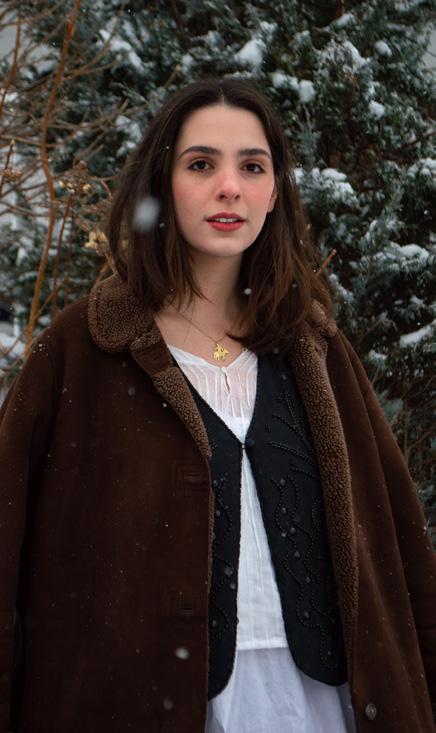
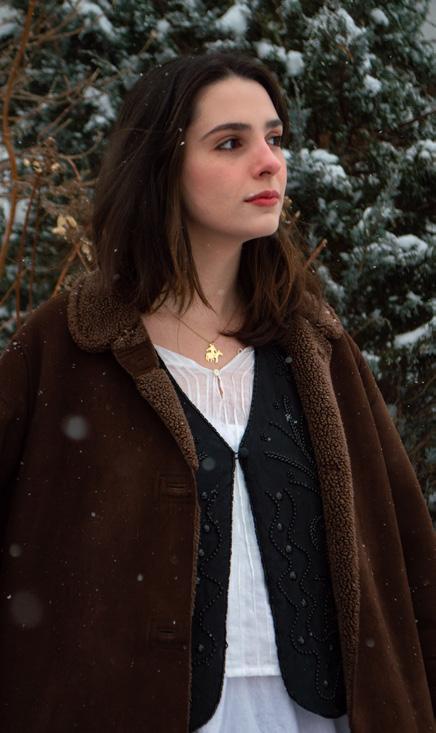
Fran’s advice to anyone else trying to craft their style? “Trust your gut. You can think of yourself out of anything, so I trust my instinct and initial reaction to things. If you trust your instinct, you will curate a wardrobe that’s entirely you, and that’s beautiful.”
photography: kaitlyn fudge
layout: juliet davidson
31
Favorite trend: “cottage-core-adjacent”
Least favorite trend: overconsumption
Trend you want to explore more in 2023: vintage workwear


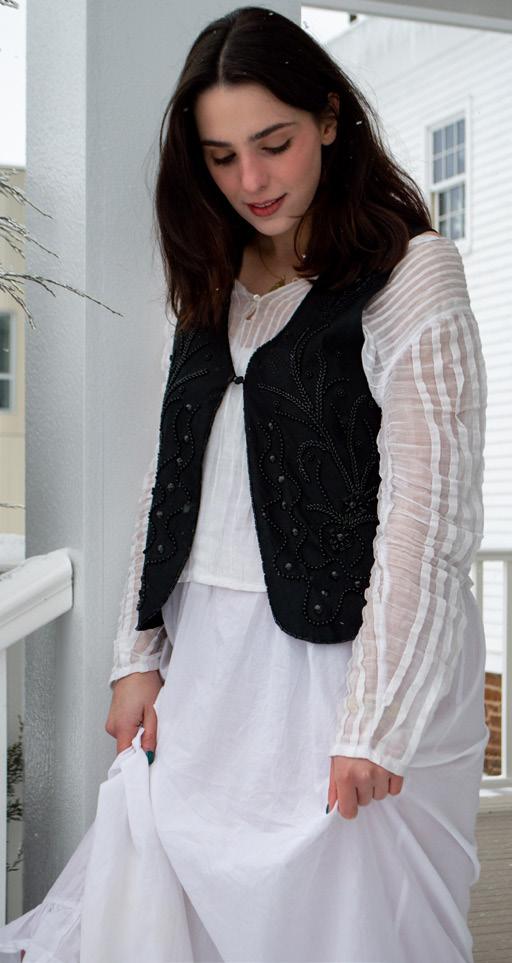
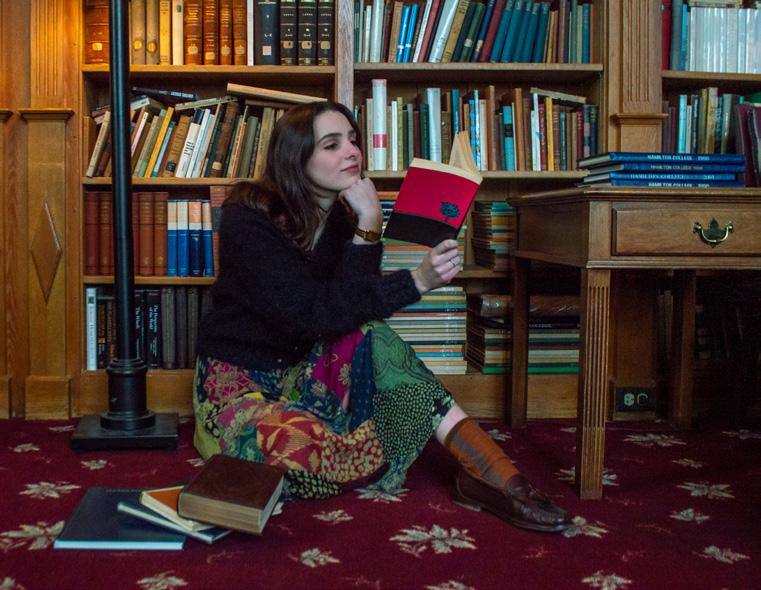
Favorite brand: Bode
Favorite shoe: tassel loafer
Favorite season: fall
32
f a u x
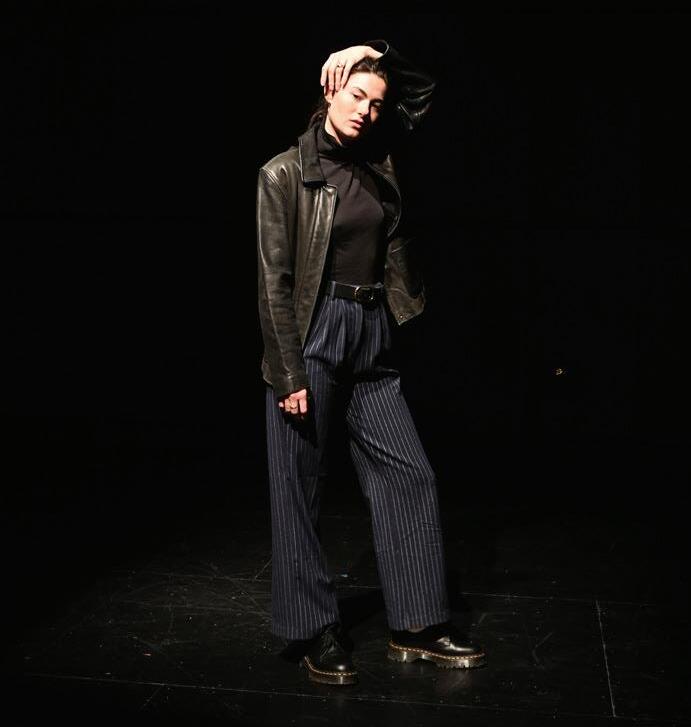
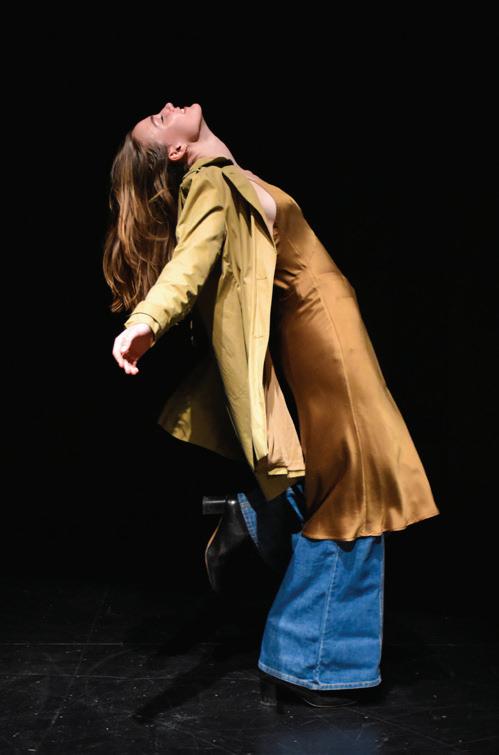









33
p a S








 by: bryna jekogian
by: bryna jekogian
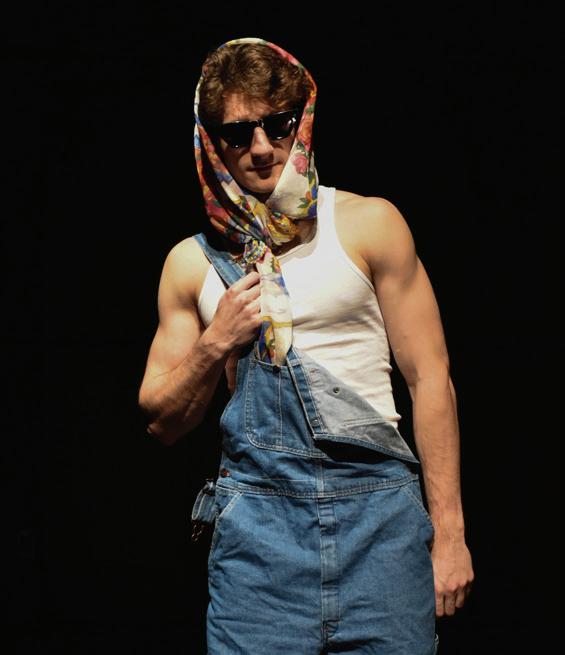
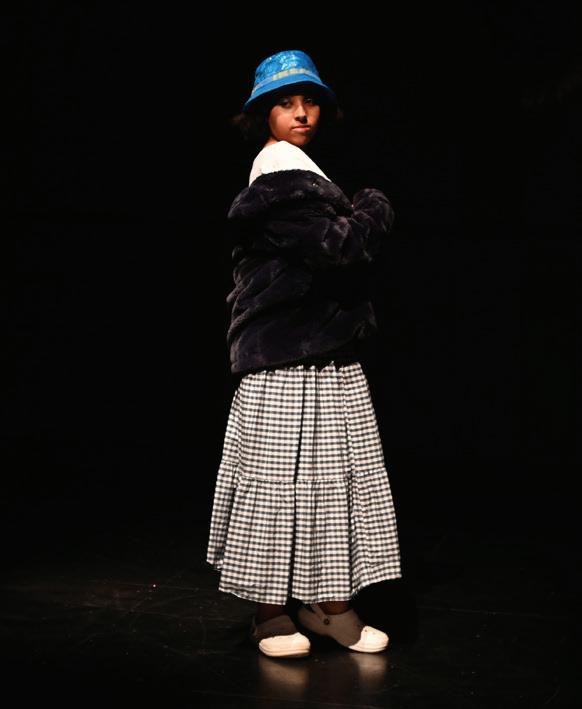
34
As technology becomes a more integral part of life, the rise of an attention economy becomes imminent. In this attention economy, it is not enough to look prettyone has to look interesting, or even shocking, to move into and secure a place in the spotlight. Fashion labels feel the mounting pressure to remain relevant. Many labels such as Balenciaga and Dilara Findikoglu have leaned into the more provocative elements of fashion, replacing delicate and appealing looks on the runway with ensembles that shock the public. Brands such as these have gained attention by going against the historically rigid standards in the fashion world. Instead of sending their models down the classic catwalk, Balenciaga’s SS23 Ready-toWear models trudged through a muddy set to display each look. Dilara Findikoglu traded a typical leather or silk material for human hair, the main component of multiple looks in their SS23 Ready-to-Wear show. Hamilton students may not have access to a bog or copious amounts of hair, but they still know how to surprise an audience by bending fashion norms. For this shoot, stylists were instructed to dress their assigned models to represent the concept of a “fashion faux pas.” Each look was carefully constructed to go against the carefully maintained fashion “rules” we are expected to adhere to and prove they have no real merit.

Stylist Eliza Pendergast fitted model Georgia Brown in a slip dress and wide-legged jeans. This pairing is frequently seen in quintessential photos of stars from the early 2000s on the runway. A trend as kitschy as this could only last for a few years, and after 2005, a dress over pants was hard to find for more than a decade. But now, celebrities have been spotted flaunting the resurgence of this trend. Georgia’s elegant outfit serves as an example of why we are seeing this look more frequently than before. The unlikely pairing appears logical: from top to bottom, the dress flows naturally into flare jeans, with the hems emanating from each other. The outfit is dominated by the bright gold silk of the dress, but the light blue denim serves as an accent color at the bottom of the look, making the gold appear even more grandiose. Pairing navy with black is seen as a fashion faux pas because of the colors’ intensity and similarity. Still, this color combo allows textures and materials to be spotlighted. Since both colors are dark neutrals, people like model Bess Lawrence and her stylist Ella Strasser can get creative and focus on materials and textures to create an exciting and composed outfit. Bess is styled in a black leather jacket with a black turtleneck and navy pinstripe pants.
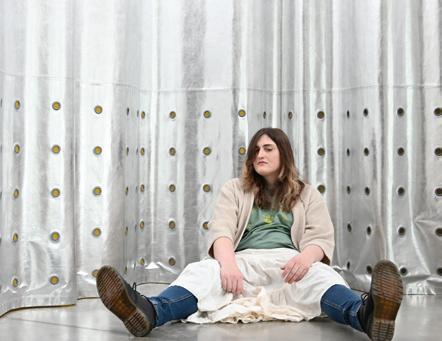
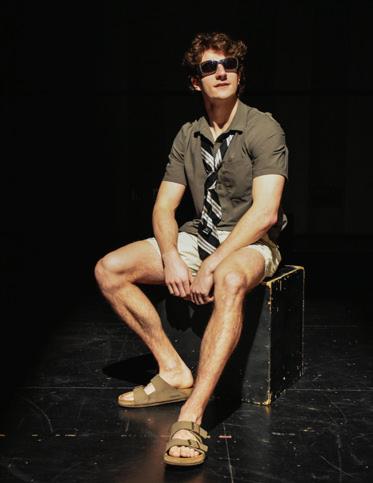
Juel, Georgina. “Streetwear: Fashion X Culture with Insight from London, Paris, and Milan.” VOCAST, 18 Jan. 2021, https://vocast.com/streetwear -fashion-x-culture-with-insight-from-london-paris-and-milan#:~:text=Streetwear%20as%20we%20know%20it,within%20the%20nightlife%20of%20Japan.

Leitch, Luke. “Dilara Findikoglu Spring 2023 Ready-to-Wear Collection.” Vogue, Vogue, 17 Sept. 2022, https://www.vogue.com/fashion-shows/spring-2023-ready-to-wear/dilara-findikoglu. Phelps, Nicole. “Balenciaga Spring 2023 Ready-to-Wear Collection.” Vogue, Vogue, 2 Oct. 2022, https://www.vogue.com/fashion-shows/spring-2023-ready-to-wear/balenciaga.

35 Works
Cited
models: Bess Lawrence, Mark Harrington, Amaris Martins, Tay Meshkinyar, Georgia Brown, Jun Mathew Reiss
photographers: Sophia Viscarello, Markos Lissarrague

36
stylists: Zoe Carovano, Louisa Crozier, Pedro Lacerda, Eliza T. Pendergast, David Sandoz, Ella Strasser
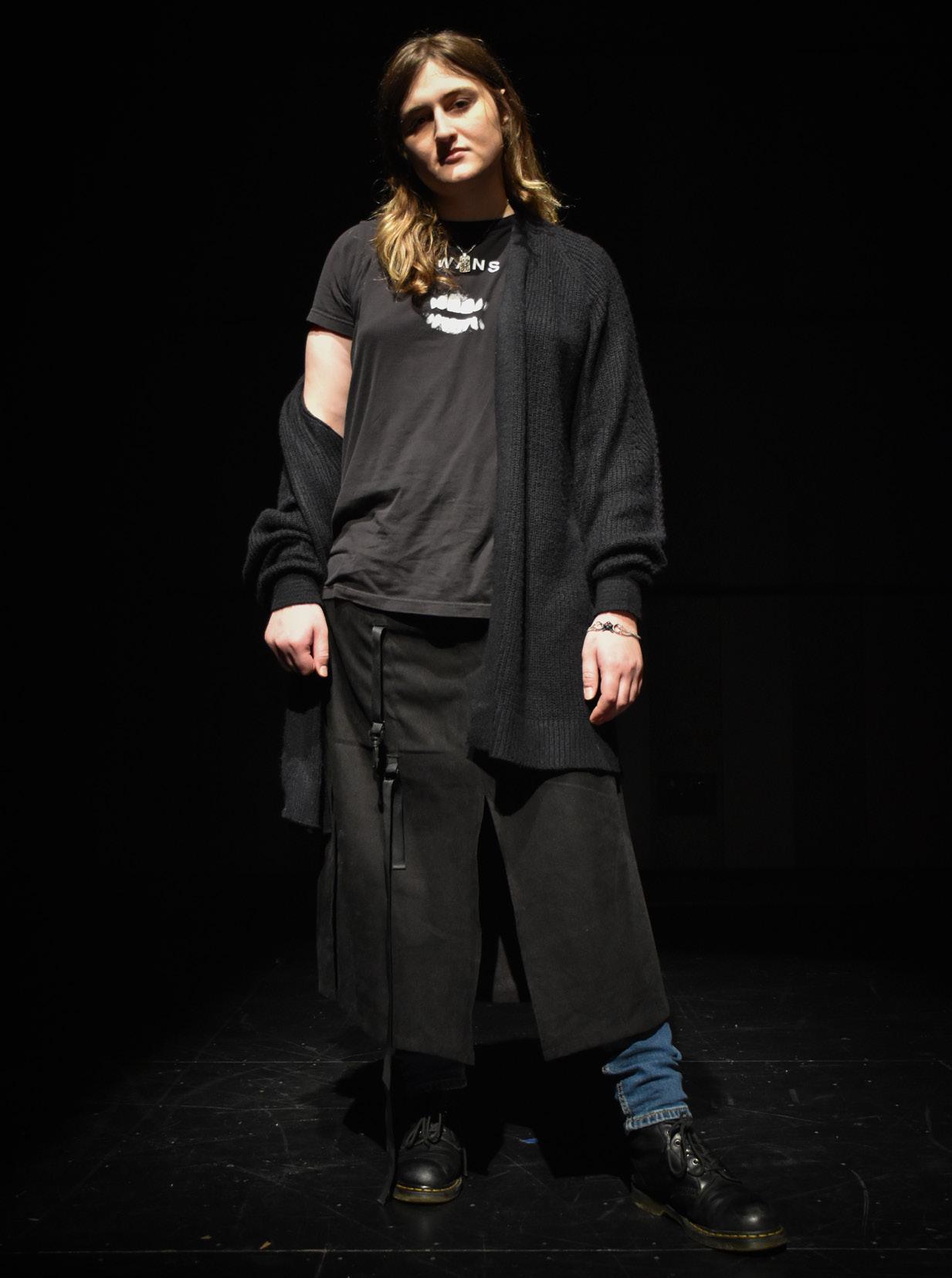

beauty artists: Abby Lowder, Eva Pearlman, Jade Levitin
layout: Andrea Hayman; copy editor: Eda Keni
37
The dark neutral tones cause the leather material and striped pattern to become the central focus. Bess also wears black Doc-Martens and a black belt, tying the whole outfit together from top to bottom. Color combinations such as Bess’ outfit are especially great when styling for different occasions since black is considered a more formal color and navy is a more casual one. This color combo makes it easy to dress an outfit up or down with just a few accessory changes. Streetwear has been emerging in popularity and critical acclaim since the 1970s. In the 90s, the trend boomed with the rise of hip-hop in New York and rose to popularity in nightlife scenes in Japan and skating communities in California. Articles like graphic tees, hoodies, loose jeans, and statement sneakers encapsulate the style. Models Amaris Martins, styled by Louisa Crozier, and Jun Reiss, styled by David Sandoz, lean into the streetwear aesthetic in their outfits that match expectations. Amaris dresses in a silk pink maxi skirt under an oversized gray hooded sweatshirt. Jun wears a blazer over a dress shirt which is half-tucked into baggy cargo pants. These outfits mix pieces of varying levels of formality. By combining formal and casual attire, both resist the notion that an outfit should be created with an event in mind. Blending articles, usually worn in opposing settings, make the looks interesting as they are not thematically consistent and are, therefore, intentionally impractical. This movement away from the traditional definition of what fashion should represent is the direction streetwear,

and runway fashion trends are moving toward. Canadian tuxedos constitute another unlikely pairing: denim on denim. Outfits of this kind have been pervasive through popular culture from the 1990s to the present but have mainly been worn to attract attention because they are traditionally considered unattractive. Justin Timberlake’s all-denim onslaught stunned viewers of the 2001 American Music Awards. His mixture of different types of denim and a cowboy hat created a shock factor that still is referenced today. However, 20 years later, fashion aficionados have finally come around to appreciate the integrity of an all-denim ensemble. The Diesel label is leading the charge in this appreciation through a newfound rise to fame due to a rebranding effort led by creative director Glenn Martins that has refocused the brand completely on denim. Most of the looks Diesel has sent down the runway in the past three years have been composed solely of denim. This trend has trickled down the fashion pipeline from the runway to celebrity fashion to streetwear. Flip back to page 3 to see the Eboard wearing the Canadian tuxedo style! Our models took on the challenge of making fashion faux pas appear dignified and attractive. The aforementioned brands have proven to the public that embracing this challenge is a route to success. Both individuals and brands embracing non-traditional styles are revolutionizing the fashion world. We will continue to see this trend increase in popularity as we become more dependent on attention as a form of social currency.


38
FASHION ABROAD FASHION ABROAD
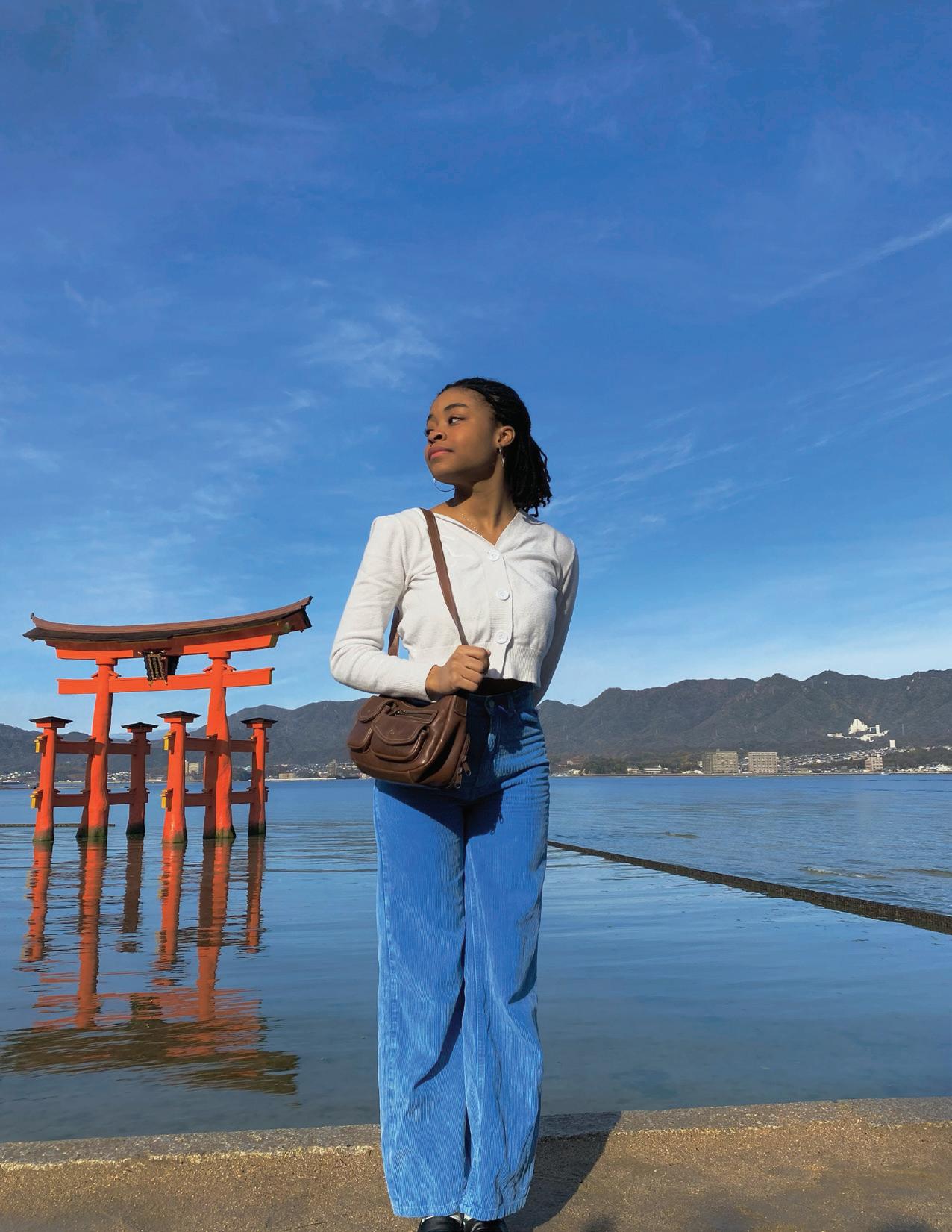
yla p ers



39
layout: Sophie Christensen
Kyoto, Japan’s most historical and cultural city, is known for its traditional architecture, beautiful temples, and stunning gardens. Many fashion boutiques and stores in Kyoto incorporate natural elements into their designs, such as floral patterns or natural fibers like silk and cotton. Everyone seems to have a unique style, from traditional kimonos and yukatas to contemporary streetwear. This diversity of self-expression is inspiring and makes me want to experiment more with my fashion choices. When I first went shopping and started to explore Japanese clothing trends, everyday clothing items were long skirts, trench coats, and muted colors. That did not stop me from wearing more vibrant colors when I wanted to, but it made me more creative when shopping and putting together outfits due to the new environment and array of options. The clothes here also tend to be more conservative: showing your shoulders is taboo. Lately, I’ve been a big fan of Japanese earrings and rings, many of them being minimalist but unique in their small ways. In general, I would say that the vibe of Japanese fashion focuses on attention to detail and quality over quantity.
KYOTO KYOTO gre ings fr




























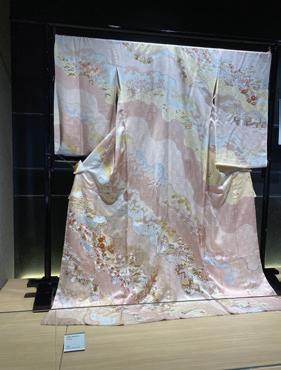
Beyond fashion, being immersed in an environment where everything is new is transformative. The first stage might be shock and confusion. A new language, new people, and new cultural norms can be overwhelming. My first week was scary, mostly consisting of me carefully navigating the Japanese world to make sure I was never breaking any unspoken rules or customs. Once I got comfortable with the unknown and this new space, I became more confident and comfortable being myself. Aside from Kyoto, I also got to visit other cities like Uji, Osaka, Hiroshima and Miyajima, and plan to visit Tokyo. Each place has a different vibe and so many new and exciting experiences. One thing I urge when traveling is to make the most of it and never hesitate to be spontaneous. I definitely learned to value time more, and realized how much can be done, seen, and learned in a single day.
Overall, I am grateful for the opportunity to study abroad in Kyoto and to have experienced the city’s rich culture and history, and to be able to branch out and lightly explore other cities as well. 10/10 experience so far. Thank you, Japan.


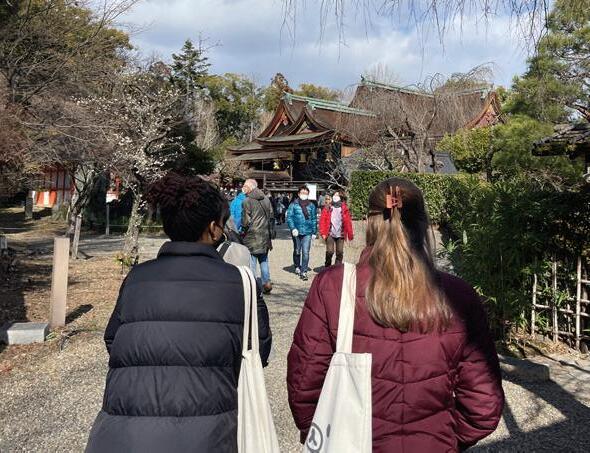
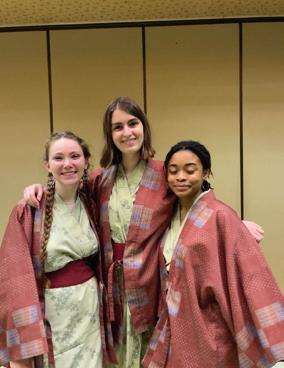

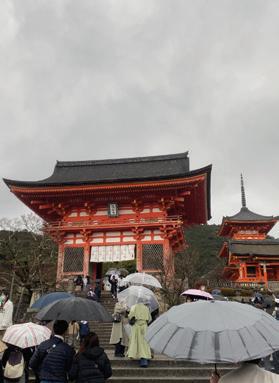

40
BOTTICELLI




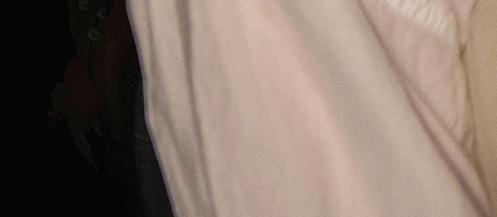


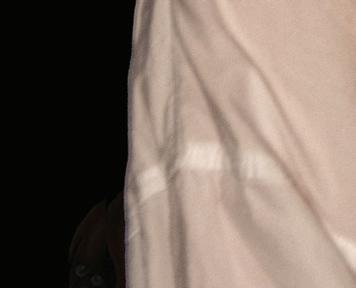

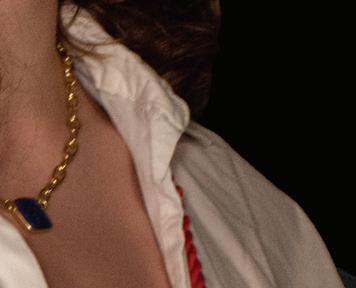


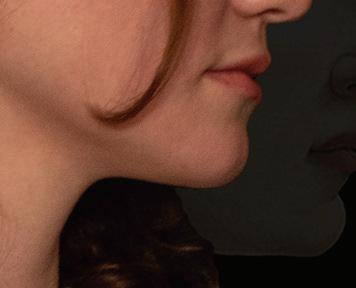
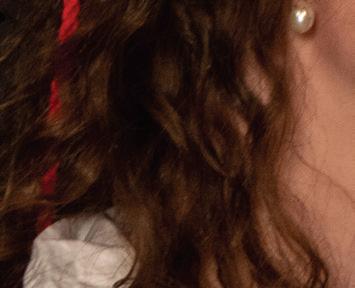


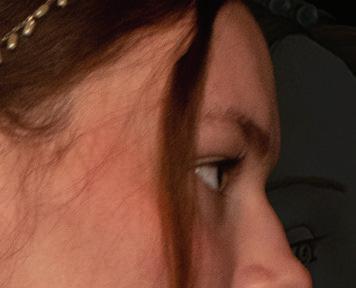



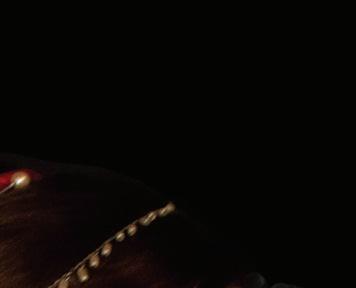
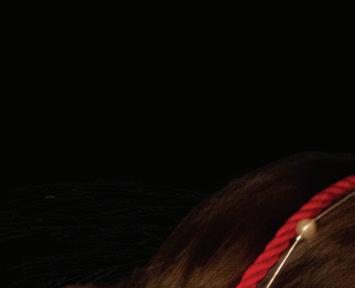

41
CREATING PORTRAITS
Oscar Wilde’s claim that life imitates art is evident by parody portraiture. Portraits usually depict the face and shoulders of a subject and highlight facial expressions, elaborate clothing, and objects relevant to the person portrayed. Spectators perceive portraiture based on appearance, but the artworks often signify a more important cause. Portraits have commemorated famous rulers, artists, and the wealthy throughout history. For this photoshoot, each model chose to emulate a well-known portrait that they found meaningful or compelling. Model Eleanor Wefing chose Sandro Botticelli’s Portrait of a Young Woman (1480-1485), which conveys the female beauty standard in Renaissance Florence. The portrait is of the profile of Roman noblewoman Clarice Orsini. Boticelli highlights her hazel eyes, pearl ornately decorated head, and elaborate dress. Eleanor chose this work because she appreciated the intricacy of the hair and the focus on accessories. She enjoyed sitting for the portrait and noted that the experience harkened back to fifteenth-century Italy, immersing Eleanor in a different time. Similarly, Model Javier Garcia liked the experience of being in someone else’s shoes. He chose to imitate Edvard Munch’s Self-Portrait with Cigarette (1895). The painting’s setting is ambiguous; it is unclear where Munch is situated. Munch’s decision to depict himself from below allows the viewer to make direct eye contact with him. The dark background emphasized Munch’s face and hands in contrast to the dark background. For an artist, the face and hands are crucial instruments of production, and Munch is celebrating their accomplishments. This painting resonated with Javier because he enjoys Munch’s work, especially the contemplative nature of this portrait. He enjoyed being able to dress like Munch and reproduce his stern and reflective appearance.
HADLEY NOONAN & KENNA SMITH WRITTEN




 Botticelli,
Botticelli,


 BY
BY



42
Sandro
Portrait of a Young Woman, 1480, oil on canvas
Self-Portrait




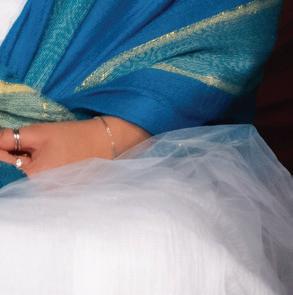
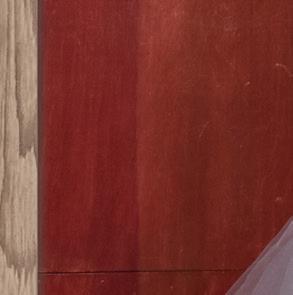

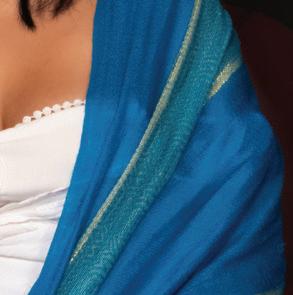

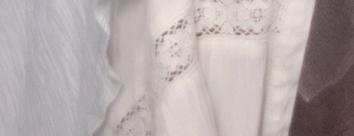
, 1940, oil on canvas





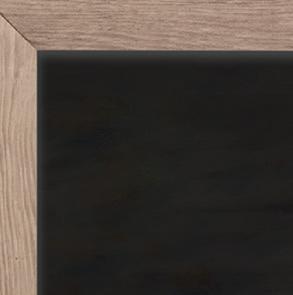




IZQUIERDO ÍA












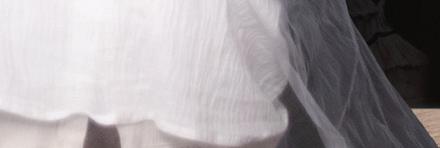



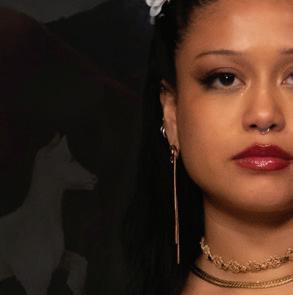
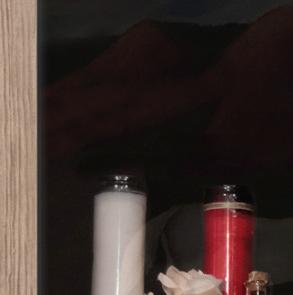
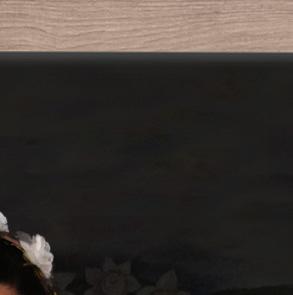
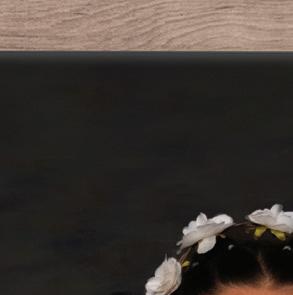












43
Painted in 1940, María Izquierdo’s Self-Portrait showcases the artist herself and her indigenous Mexican heritage. Many often overlook her work in favor of other artists of the time, like Frida Khalo, but Izquierdo brought a unique outlook to modern Mexican art. She delivered folklore and indigenous motifs to the forefront of her work in a way previous artists had not, which is especially prevalent in her self-portrait. She wears traditional garments associated with indigenous cultures; the regional garments of Veracruz especially inspire her dress. Though her dress is customary, the garment feels modern and timeless to the viewer. Model Mil Fienco sits in a ruffled skirt adorned with bows reminiscent of trends we are seeing today; think of the resurgence of hyper-feminine, almost 50s-inspired ornamentation.
David Hockney’s portrait, Jean-Pierre Gonçalves de Lima (2020), is of his longtime partner. During the pandemic, it is part of Hockney’s newest collection of portraits created on his iPad. The portrait features Hockney’s signature vibrant and colorful style but differs from his earlier works which were full of clean lines and pool-side scenes. The artist, well into his 80s, has taken on a new perspective over quarantine, moving to Normandy and focusing on digital artwork. Model Cole Wright-Shaner emphasized his pursuit of finding fashion inspiration from art. He commented on Hockney’s use of color, which Cole wants to draw more profound inspiration from by using color in his daily fits. Above all, though, he believes that fashion is, in the end, wearable art.
HOCKNEY DAVID





















44
David Hockney, Portrait of Jean-Pierre Gonçalves de Lima, c. 2020, digital.
MUNCH





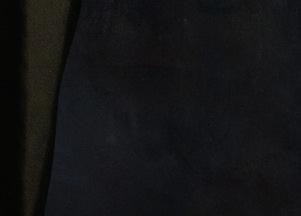
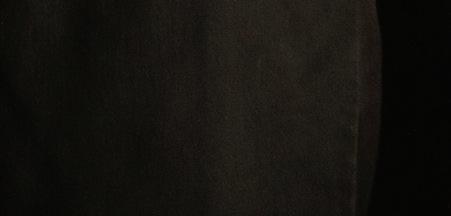

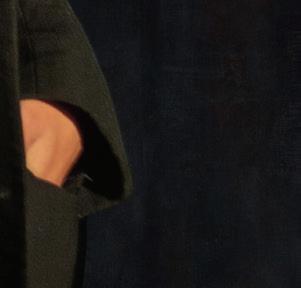


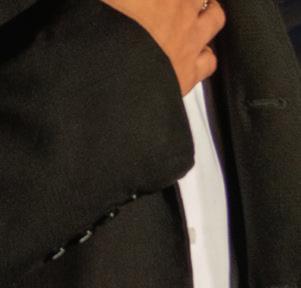

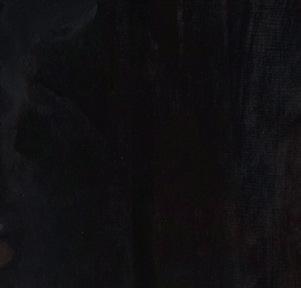
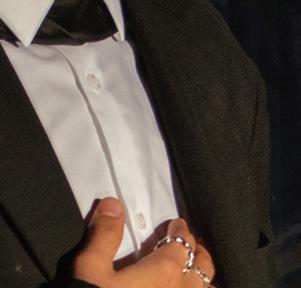
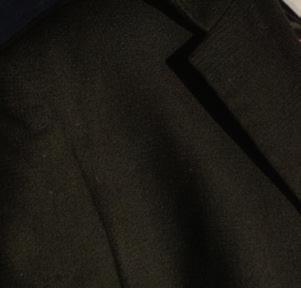
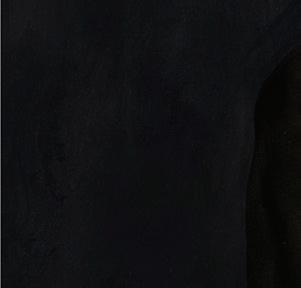
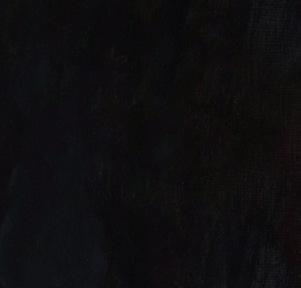

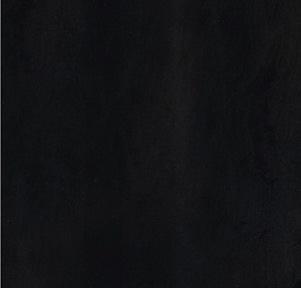

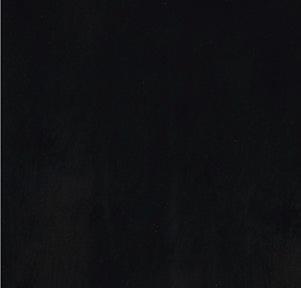
models: Cole Wright-Schaner, Eleanor Wefing, Mil Fienco, Norma Callejas, Javier Garcia photographers: Amanda Sedaka, Kaitlyn Fudge, Hana Dolan stylists: Olivia Chandler, Cole Kuczek, Louisa Crozier, Maeve Zimmerman, Eliza T. Pendergast beauty artists: Jade Levitin, Eva Pearlman, Ashley Cheffolway layout and photo editing: Talia Rosen ; copy editor: Bryna Jekogian and Emma DiGiacomo
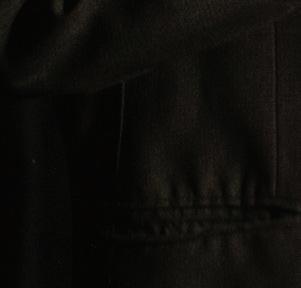

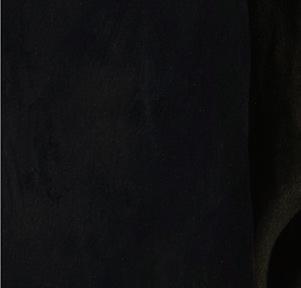
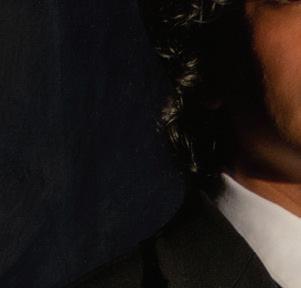

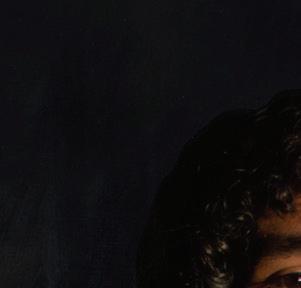
45 Edvard Munch, Self-Portrait with Cigarette, 1895, oil on canvas
Angel Rodríguez-Díaz is a contemporary Puerto Rican artist currently active in San Antonio, Texas. His work, The Protagonist of an Endless Story (1993), will be featured in a show titled “Many Wests: Artists Shape an American Idea” in the summer of 2023. The exhibition intends to display the complex nature of the American West. Díaz’s subject is Sandra Cisneros, a Mexican-American poet, and writer from Chicago. The work depicts Cisneros almost looking down on the viewer, arms crossed, and surrounded by a distinctly Western background. The model recreating Diaz’s work, Norma Callejas, wanted to emulate a painting with a strong Mexican influence. She particularly liked the portrait’s power, highlighting Cisneros’ dark lipstick, stance, and dress that emanated confidence. Norma commented on becoming art herself, saying it was fulfilling and linked her to her culture.
Painted portraiture has gained contemporary importance in its ability to showcase what life was like before the invention of photography. The act of recreating portraits preserves an ancient, yet timeless art form. Portraiture has become more accessible than ever before, with selfies and phone cameras. We can recreate what it was like to sit for a painting or photograph through parody portraiture.

ANGEL



RODRÍGUEZ -DÍAZ
















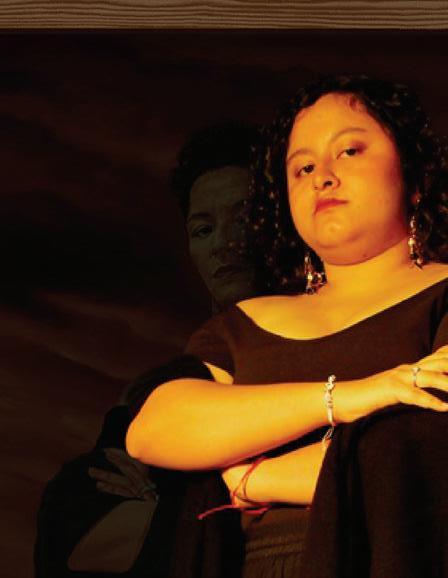
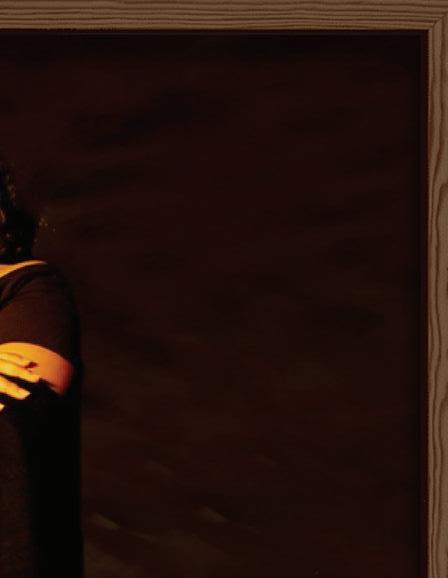






46
Angel Rodríguez-Díaz, The Protagonist of an Endless Story, 1993, oil on canvas
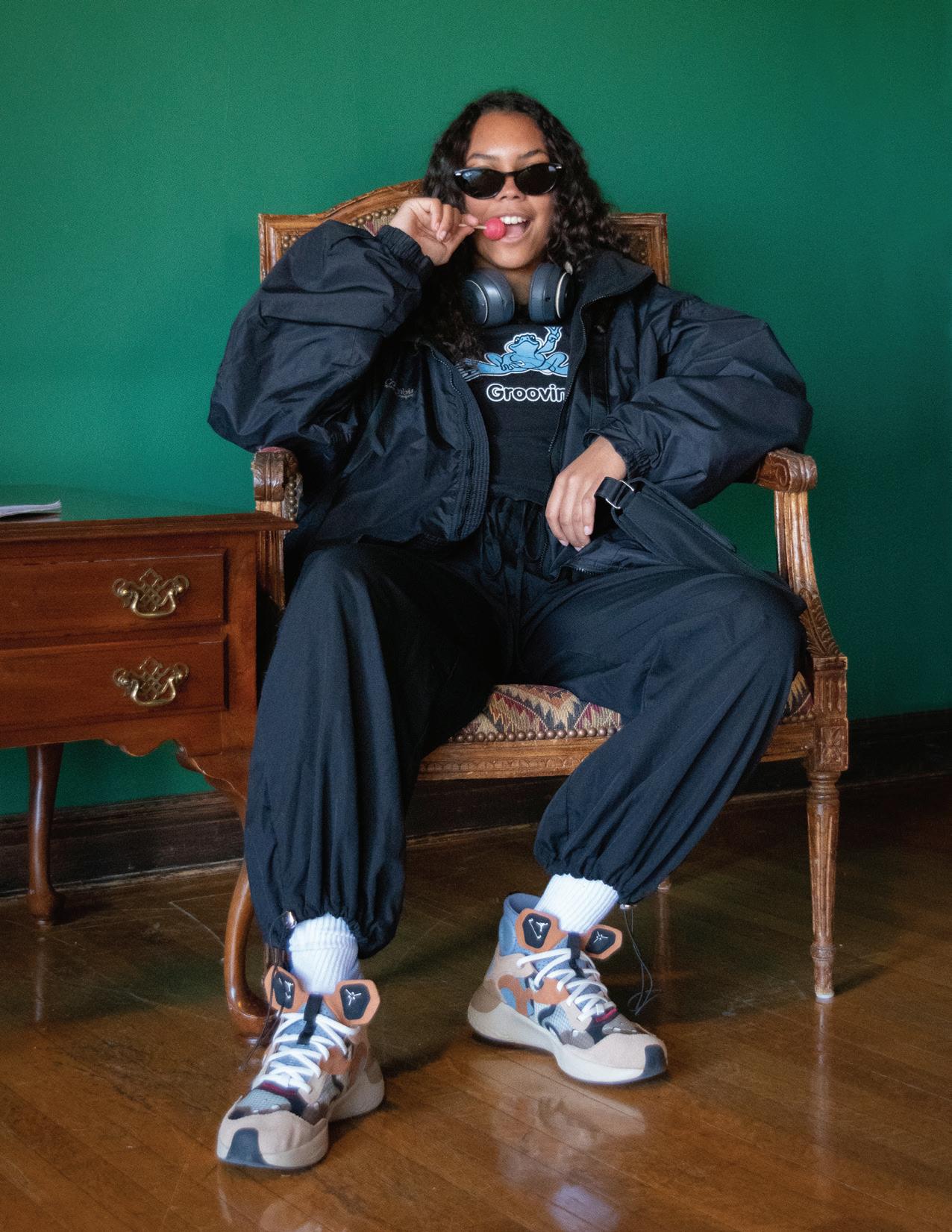




































 Surya Gowda & Anna Sakamoto co-editors-in-chief
Surya Gowda & Anna Sakamoto co-editors-in-chief


























































































































































































































































































































































































































































































































































































 by caroline boyd
by caroline boyd








 stylists: Sammy Higgins, David Sandoz, Amaris Martins, Zoe Carovano, Pedro Lacerda, Ella Strasser layout: Mil Fienco; copy editor: Hadley Noonan
stylists: Sammy Higgins, David Sandoz, Amaris Martins, Zoe Carovano, Pedro Lacerda, Ella Strasser layout: Mil Fienco; copy editor: Hadley Noonan




































































 LAYOUT BY SOPHIE CHRISTENSEN BY SADIE CHASE-TATKO
LAYOUT BY SOPHIE CHRISTENSEN BY SADIE CHASE-TATKO









 White
White



























 by: bryna jekogian
by: bryna jekogian





































































 Botticelli,
Botticelli,























































































































